September 28 solstice on October 5, during the Mid-Autumn festival-National Day double festivals, college dean Mr.Shing-Tung Yau led more than 30 people to college teachers and students in Shandong province and Henan province to carry out the "Chinese History Practice Study", respectively visit and research of Zibo, Qufu, Zoucheng, Kaifeng, Luoyang, and Zhengzhou historical relics, in-depth study and feel the Chinese thousands of years of history and the origin and development of civilization. Professor of Qiu Chengtong Mathematical Science Center of Tsinghua University and Caucher Birkar, winner of the 2018 Fields Prize, traveled with students to explore the culture of Central China cultures.
The first station, Zibo.
Eight Sounds in Ganzhou: A Mid-Autumn Festival Visit to Linzi
Shing-Tung Yau
Taking advantage of the cool autumn for the east-forward tour, I visit my ancestors and go to Yingqiu. I see the old battlefield, where eagles fly over the Muye land, blood floating pestle, the great career being based on here. Old warriors held the Yue axes and Jing flags, occupying their earth to fight against the West Zhou dynasty. They created the art of war and followed the way of Taoism.
People always say that success is difficult to defend. Even if the King of Qi-huan won nine times, he could not fulfill his ambition in the end. I can just sigh that the time is easy to go away, with my head turning from black to white. I visit the ancestral hall, see the ancient pine green cypress, and read the story of Taigong, who began to prepare for himself when he was 80 years old. So I gradually raised my eyebrows, with my strong willingness for my future career, which is not aimed at gaining fame or power.
Zibo, the former capital of the State of Qi during the Chinese Zhou Dynasty, was the birthplace of Qi culture and the fief of Jiang Taigong, who helped the Zhou Dynasty and conferred the title of the gods. Jiang Taigong was first conferred in Qi, which opened the history of Qi and laid the foundation for the development of Qi culture. The state of Qi was once the first of the five hegemons in the Spring and Autumn Period and one of the seven masters in the Warring States Period. The economic and cultural development was once brilliant. In particular, the economic thought of governing the country and the academic prosperity of schools of schools of thought guided by the Jixia Academy in the Chinese Warring States Period deeply influenced the development of thousands of years of Chinese civilization.
We first visited the ancient town of Zhoucun, known as "the first village in the world", which is located in the core area of Qi culture. During the Warring States Period, the city of Qi was the source of the Silk Road and the birthplace of Lu Shang, until the late Qing Dynasty and the early Republic of China. Today, the ancient town of Zhoucun is well-preserved and very lively. Walking on the streets of Zhoucun, you can feel the appearance of merchants, shops, and the hustle and bustle of the market.
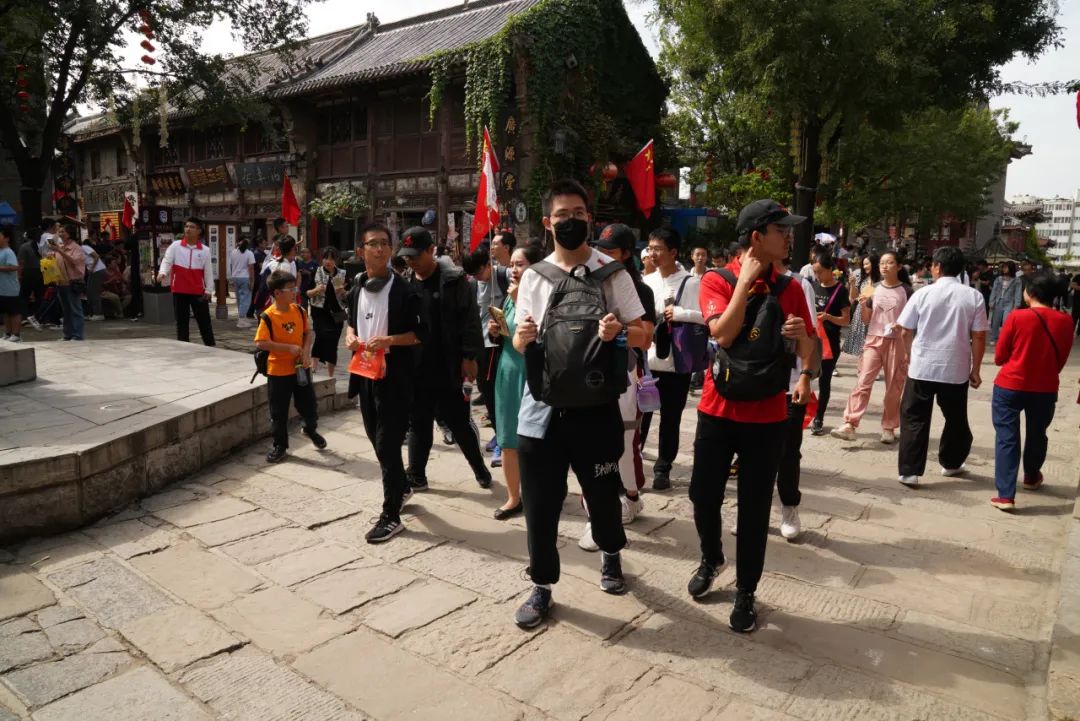
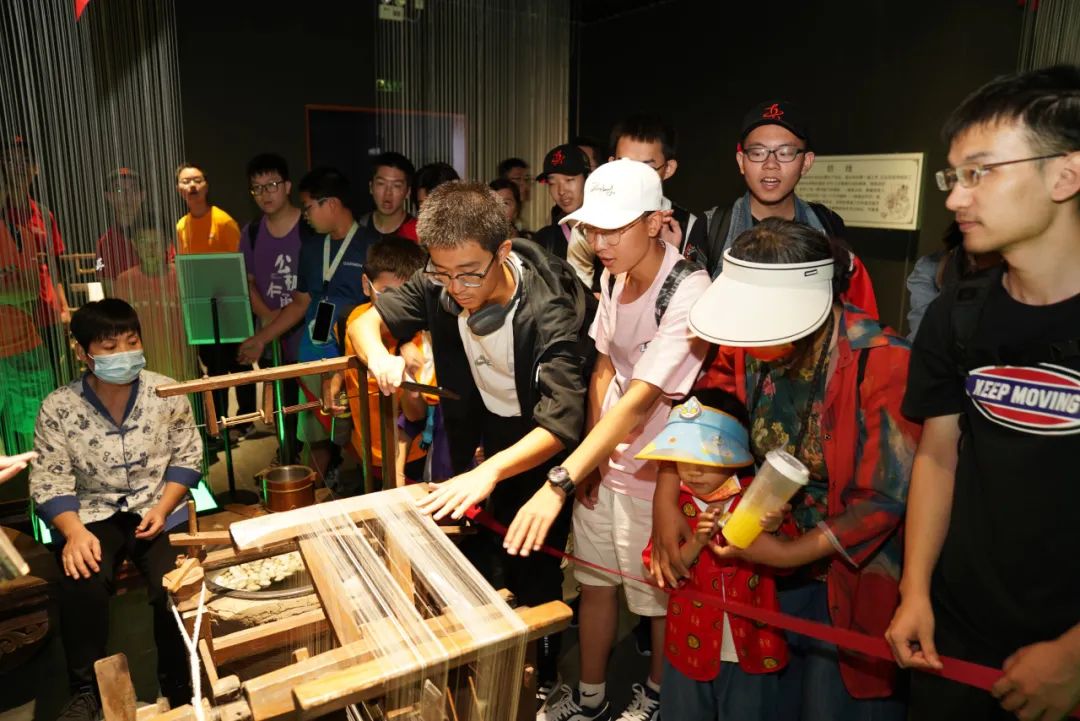
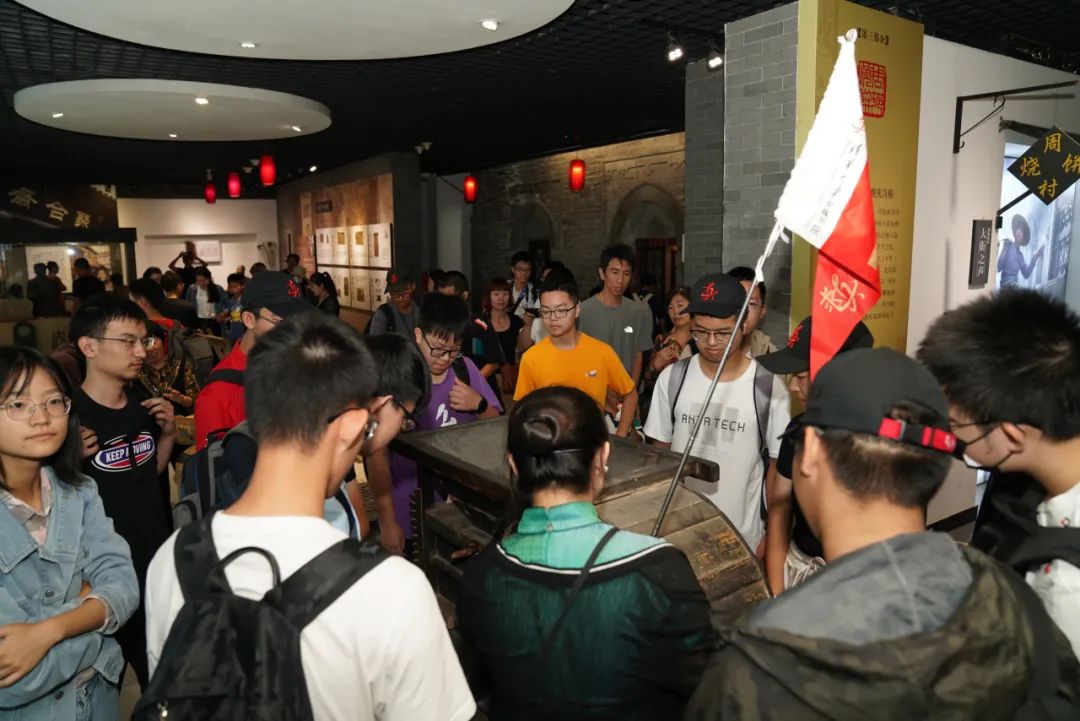
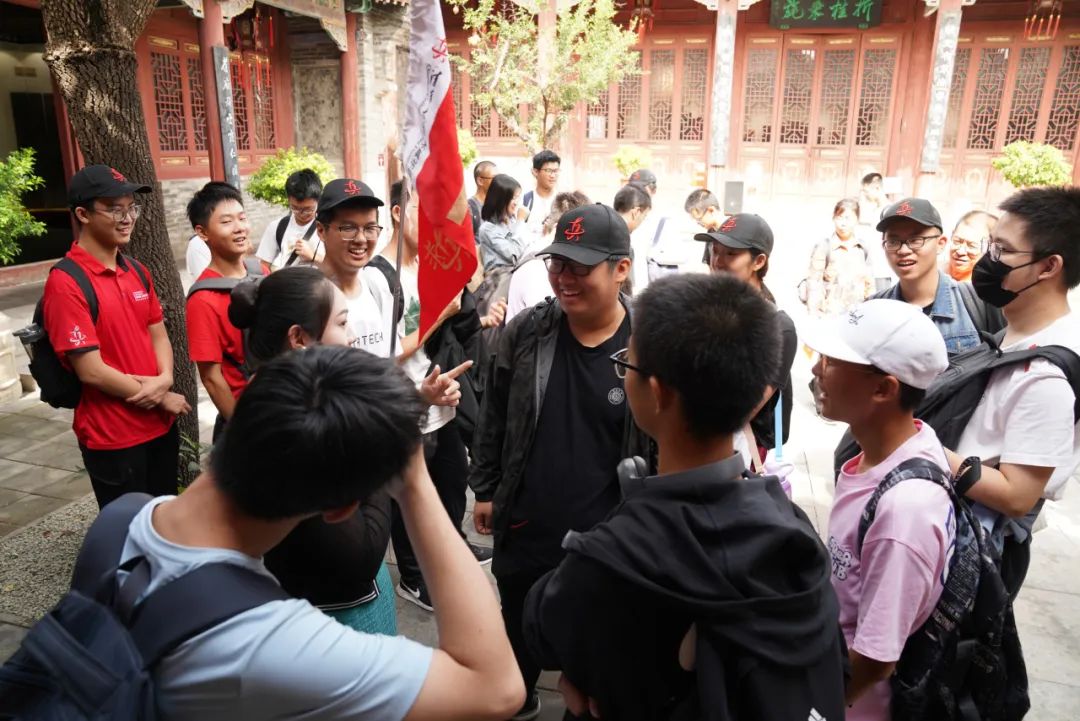
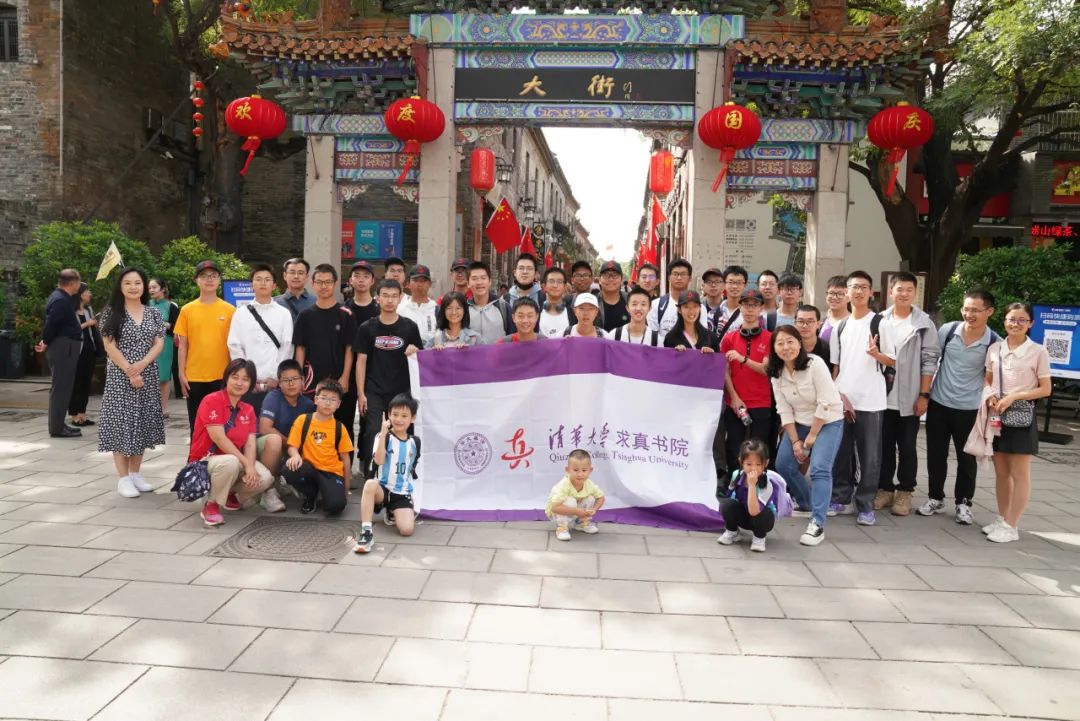
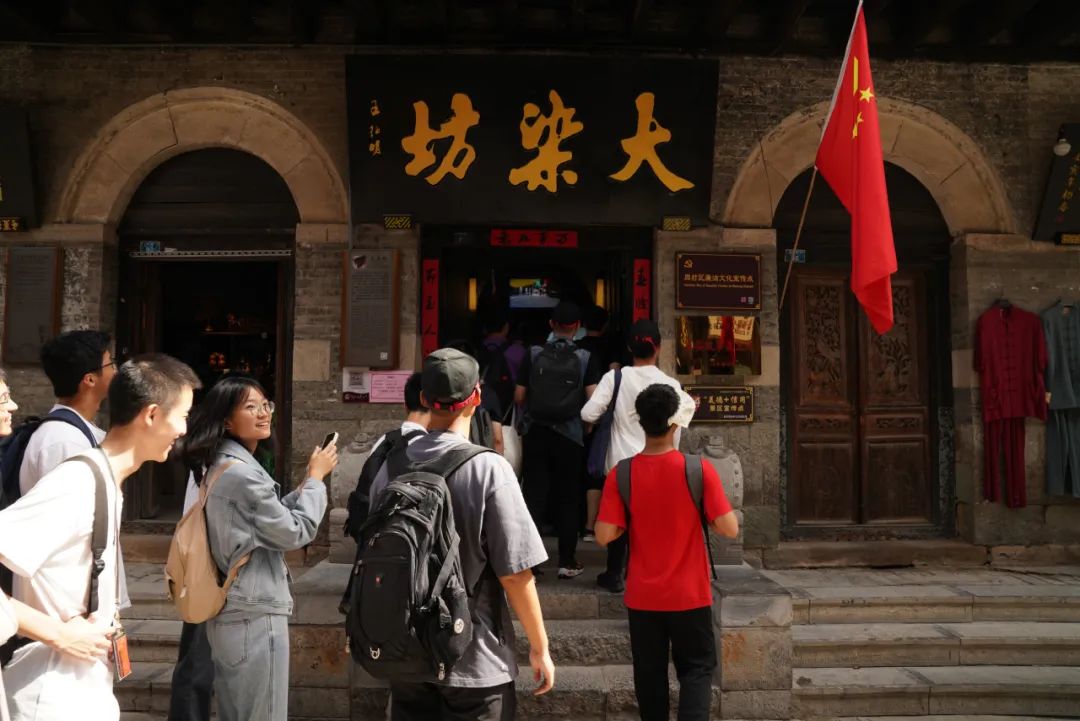
Visiting the ancient town of Zhoucun.
Qi Culture Museum, "great qi wind" four words first came into sight. According to the introduction, 5000 years ago, the earliest Chinese characters were pottery; in ancient times, living in the land mainly the Dongyi people, they were the predecessor of the Han-the main source of the "Chinese" nation, the familiar Dongyi leaders, Taihao, Shaohao, Chiyou, shun, Gao Tao, Bo Yi, etc. From Qi first to the Western Zhou Dynasty, and then to the Spring and Autumn Period and the Warring States Period, Qi culture took root and sprouted in this land, and continued to grow. We pay special attention to the fact that during the Warring States Period, the State Council of Qi held the Jixia Academy, which was the earliest famous government-run university and the Academy of Social Sciences in Chinese history. Over the past 150 years, scholars from different schools of thought gathered in Ji to communicate, spread, and argue, which greatly promoted the integration and development of the academic scholars, and had a profound influence on the development of Chinese culture and academia. In 221 B. C., the state of Qi was finally merged with the state of Qin, but the culture of Qi did not disappear. Instead, it merged into the mainstream of traditional Chinese culture and moved forward.
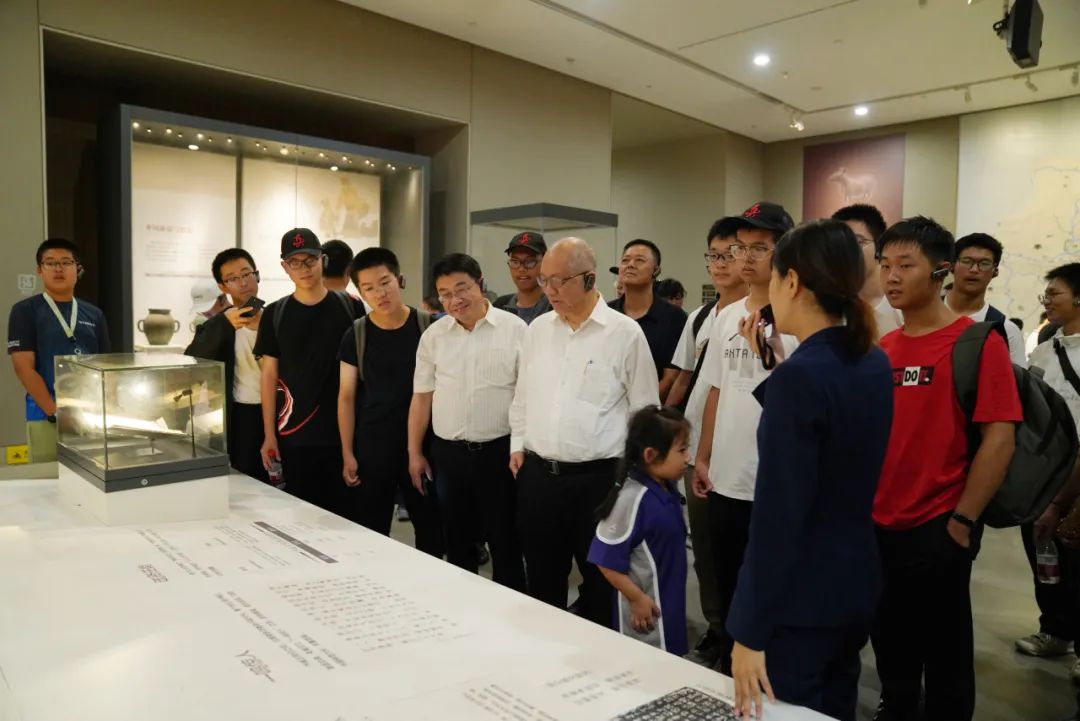


Visiting the Qi Culture Museum.
In Zibo, we also visited Jiang Taigong Temple and Chenzhuang West Zhou Site Museum. In Jiang Taigong Temple, in addition to understanding his great achievements, military thoughts, and ideas of governing the country, some teachers and students found that their surname was Yu Jiang, which can be said to be a journey to find their roots and ancestors. The early cultural relics of the Western Zhou Dynasty unearthed in the Western Zhou Site Museum, especially the copper inscriptions with the characters of "Qi Gong", provide a direct basis for the early historical study of Qi culture, and also prove that there was Jiang Taigong in history, not just in legends.
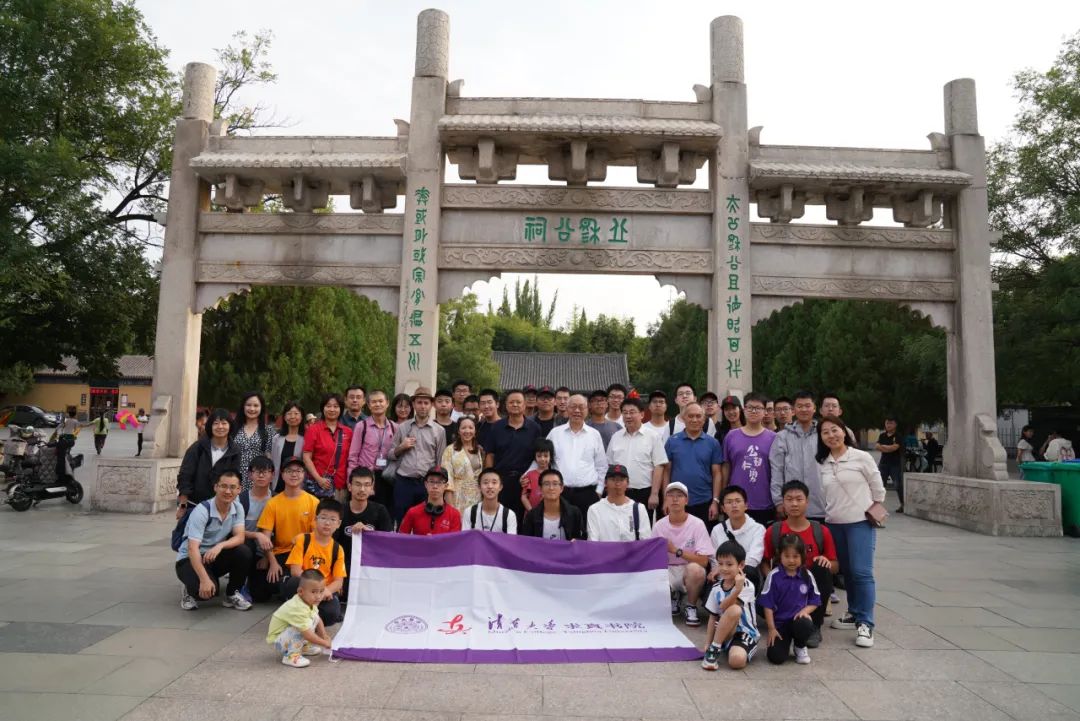

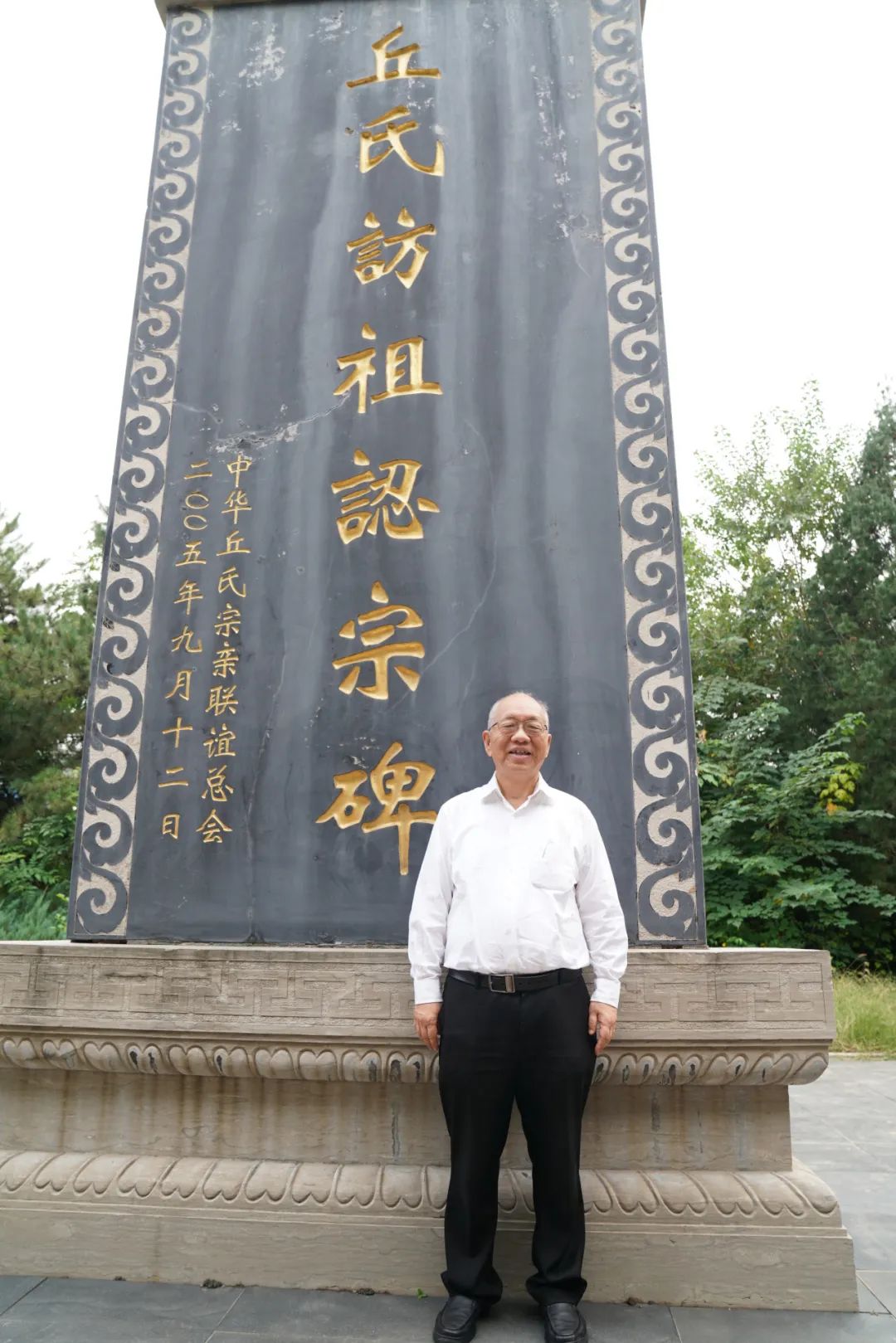
Visiting Jiang Taigong Temple.
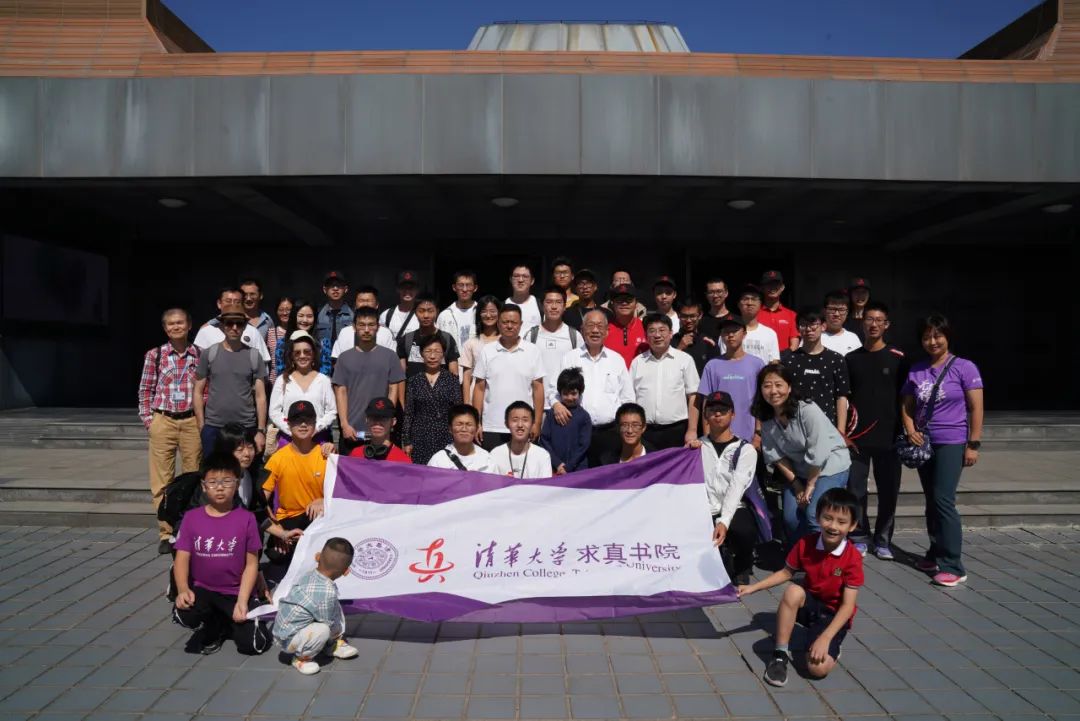
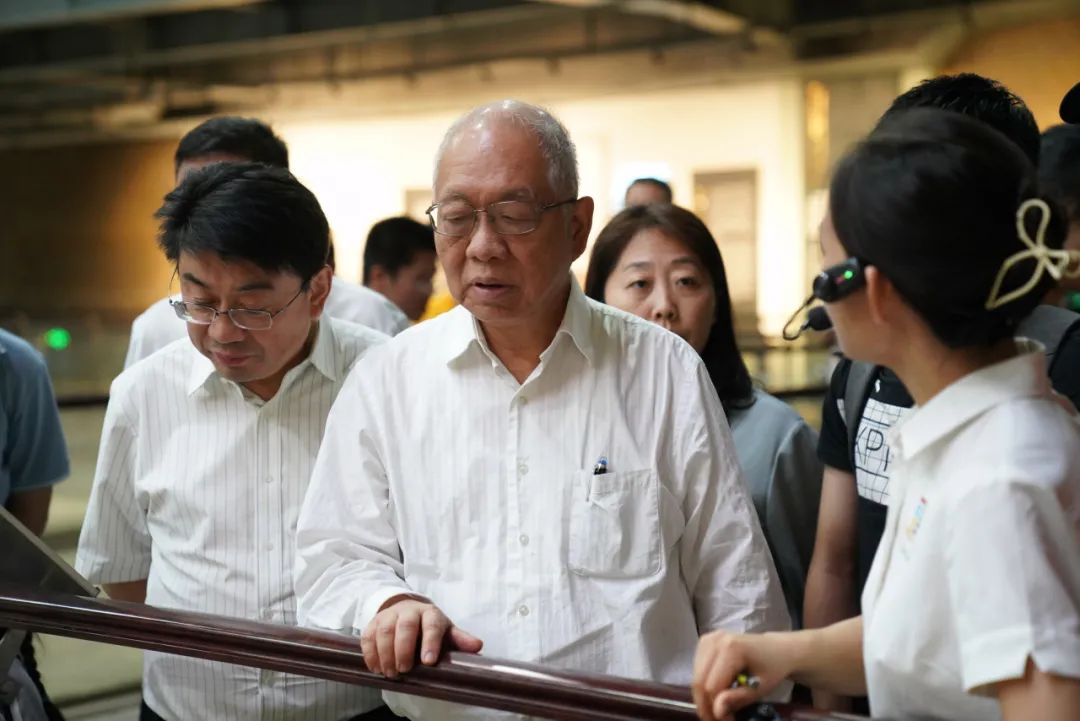
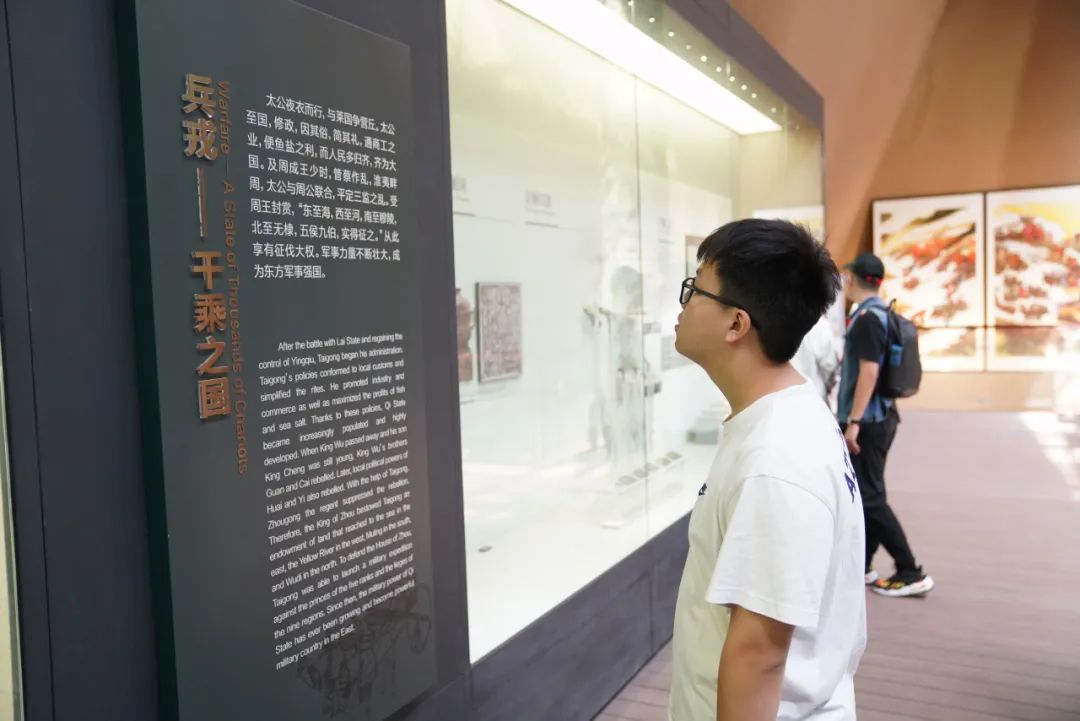
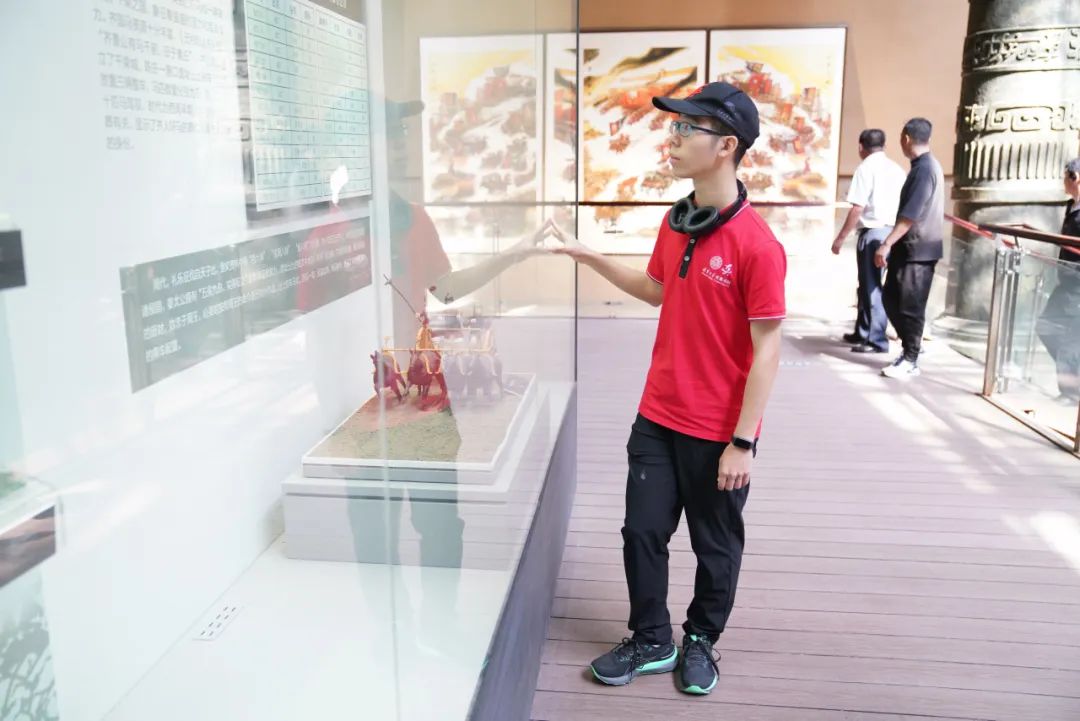
Visiting the Chenzhuang Site of West Zhou Dynasty Museum.
The second station is Qufu and Zoucheng.
Shandong is the hometown of "the most holy Confucius" and "the most holy Mencius", and is the birthplace of Confucian culture and thought. After leaving Zibo, the former capital of Qi, we went to Qufu, the birthplace of Confucius, and Zoucheng, the birthplace of Mencius. We visited the Confucius Institute Meng Temple and Meng House, respectively, to conduct in-depth research and learn about the life and ideas of the two great saints. Confucius and Menciu's thoughts are in the same vein and have a profound influence on later generations. Confucius was born in the Spring and Autumn Period, and Mencius was born in the Warring States Period. Although not in the same period, the hometown of the two great saints was not far away, so Mencius 'theory was influenced by Confucius' thought. At the Confucius Institute, we learned the main contents of Confucius's thought, including the people first, political morality, morality, benevolence, harmony, and differences; when visiting the Meng Temple, we repeated the story of "three migrations of Mencius's mother" with interest, deeply the importance of education. Like Confucius, Mencius paid great attention to personality cultivation. He advocated that the integrity of "wealth cannot be corrupted, poverty cannot be removed, and power and force cannot be subjugated." For thousands of years, this kind of integrity has been integrated into the genes of the Chinese people, deeply rooted.
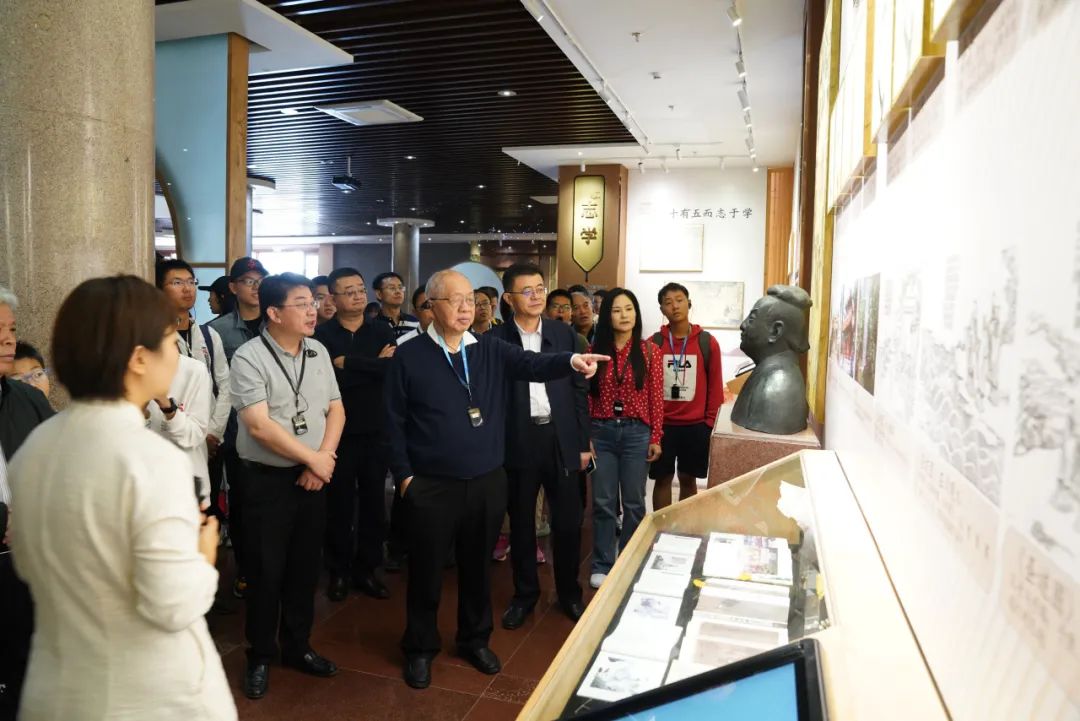
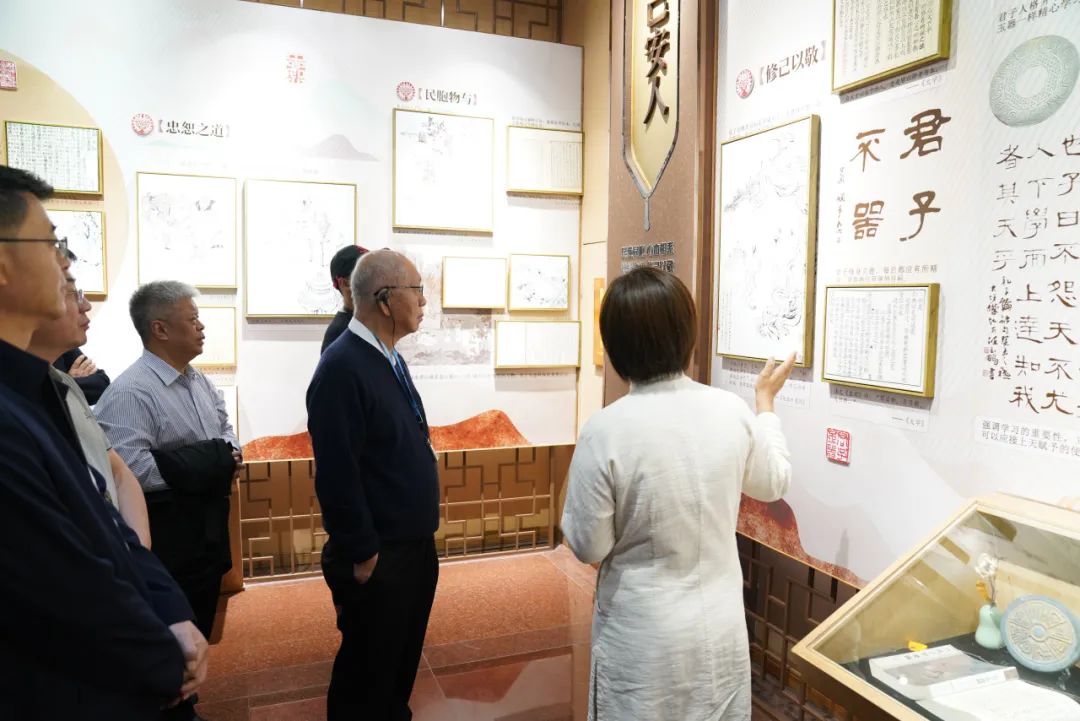
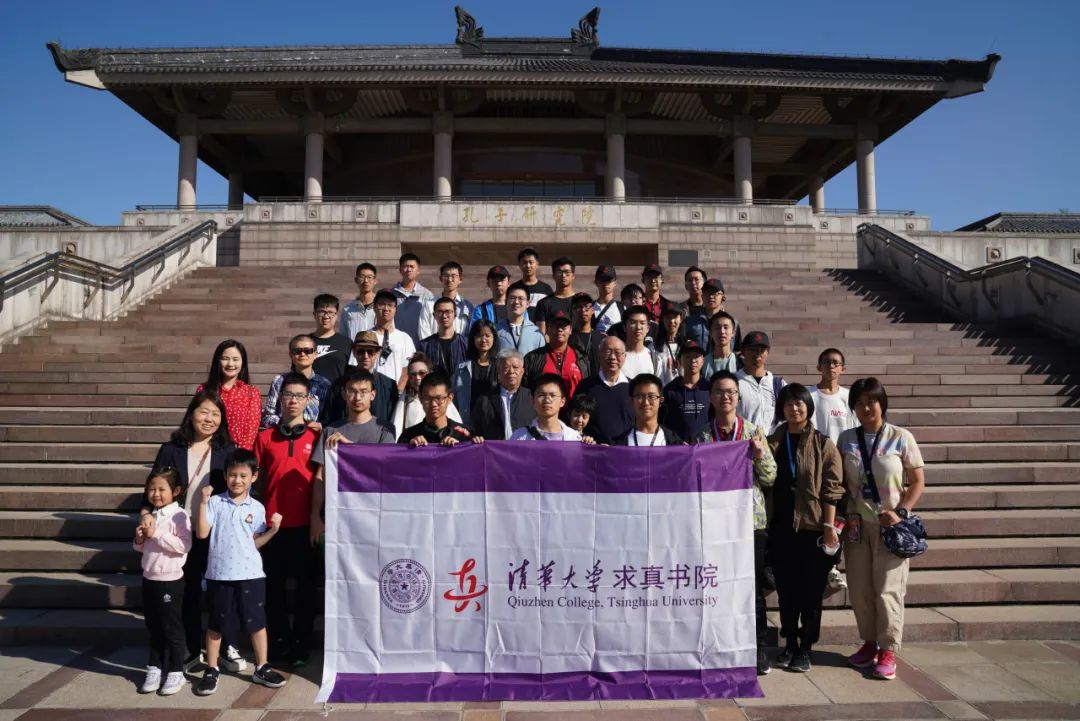
Visiting the Confucius Institute.
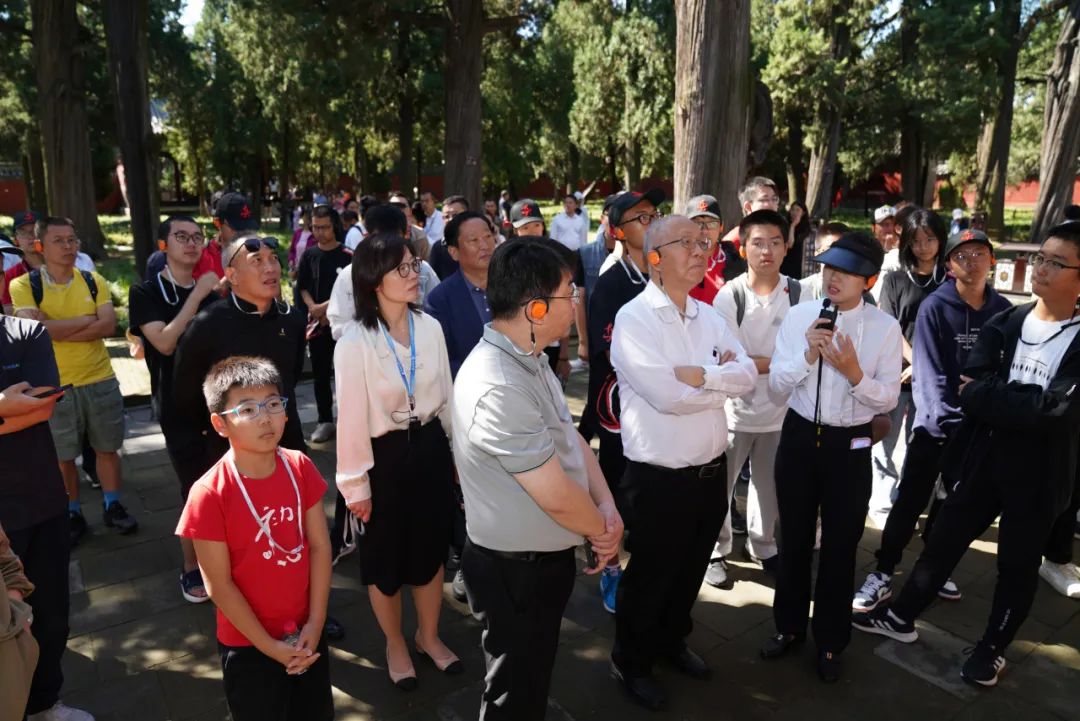
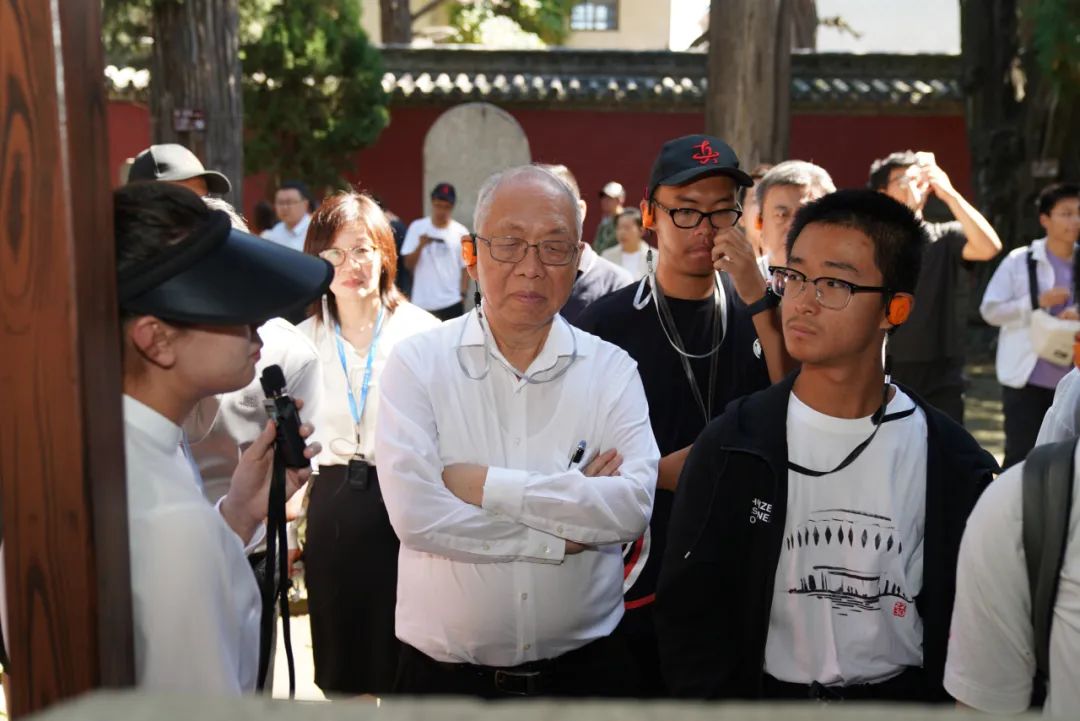
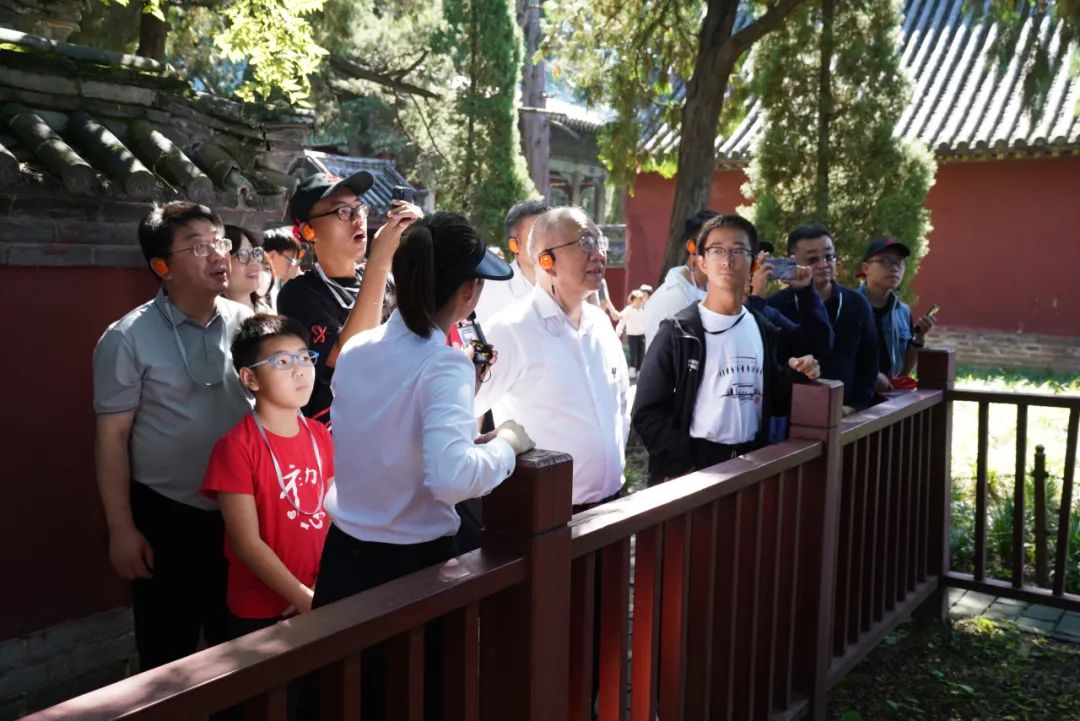
Visiting Meng Buildings and Meng Temple.
The third station, Kaifeng.
Man-Jiang-Hong(The River Turns into Red)
Notes: On October 1st, all the historic sites were submerged by the Yellow River, I was touched and made this poem.
This is a city that kept its fame and flourishing for ten generations, finally turning into yellow dust, and we can not find it anymore. In the Chen Qiao Revolution, China was reorganized and strove beyond again. However, the Emperor of the Song Dynasty divested his General’s military power just with a cup of wine, hurting the willingness of his people. So the great intellectuals Ou-Yang Xiu and Su Dongpo could just write romantic poems about the wind or the moon. In exchange, the sooner the barbarian's horses broke the imperial capital, the Emperor had to run away.
Now, the Chinese basic science is still not completed. The national dream always keeps my heart excited. So today, I lead these young students coming across thousands of heavy mountains. I am determined to overcome the mathematical barriers for China, with strong confidence to hone the axes for Chinese people. When this career is successful, Chinese mathematics and physics will on the top ones in the world, and then we can be the true heroes.
--Shing-Tung Yau, on October 7,2023
Leaving Shandong, we went to Kaifeng City, Henan Province, and visited the Qingming Shanghe Painting and the Zhouqiao heritage. Kaifeng is a famous historical and cultural city with a history of more than 4,100 years. In the old days, it was once called Bianjing and Doing-jing(East Capital), and many dynasties have established their capitals here, known as the "ancient capital of eight dynasties". In the Song Dynasty, Kaifeng was the largest city in the world at that time, and it was also the creation place of the Qingming Shanghe Painting. In the Song Dynasty, the bustling Kaifeng city was described at that time, such as “Lift the eyes, there are the greenhouses and painting pavilions, showing with household pearl curtains. Carving cars are competing in Heaven Street, precious horses are running on the royal road, the gold and jades are shining into eyes, the beautiful silk clothes are all in fragrance... people from eight areas of the world are trying to come here and this city connects with thousands of countries in the whole Earth... The treasures and collections from the four seas, all belonging to the markets of this city”. Kaifeng is a city that has fought against the Yellow River for thousands of years. The Yellow River is the mother river of the Chinese nation, which once gave Kaifeng a brilliant land. However, the city of Kaifeng was besieged by floods and destroyed several times. It is said that there are many cities buried underground in Kaifeng, all of which were destroyed by the Yellow River at that time. The Zhouqiao site we visited this time is a strong witness of China's great river civilization, revealing the symbiotic relationship between the Yellow River and the ancient city of Kaifeng. "A Dream of Splendor in East Capital" is also recorded on the state bridge, Zhouqiao, as "state bridge, the name of the Tianhan bridge, on the big royal street... both sides are the stone walls, carved seahorse, water beast, flying clouds", can think of the heyday of the year. Now the loess-broken gravel has witnessed thousands of ups and downs, ups and downs, and people sad. Since the founding of the People's Republic of China, the state has been investing in various efforts to control the flood of the Yellow River, protect the ecological environment, and create the theme culture of the Yellow River. The ancient city of Kaifeng continues to shine.
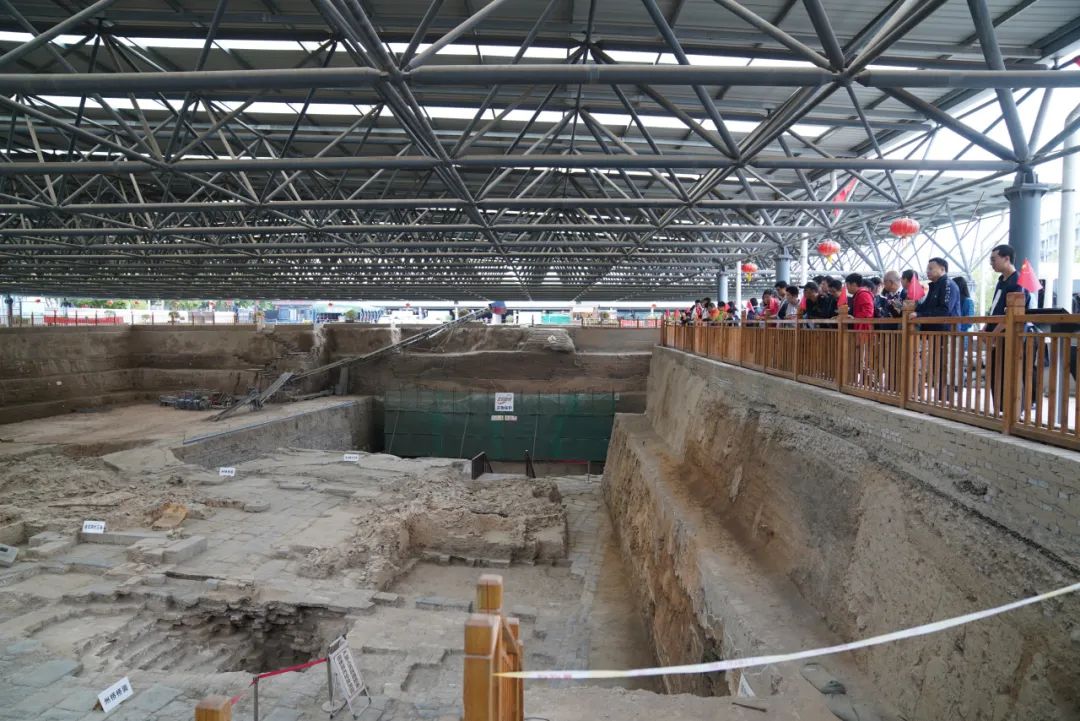
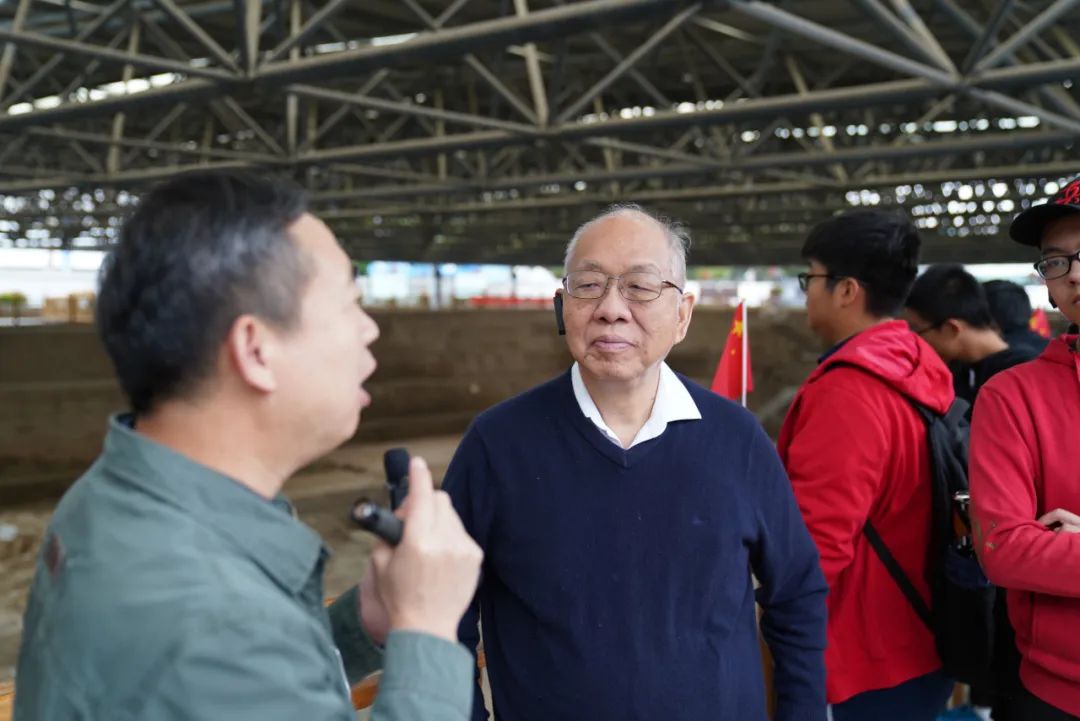
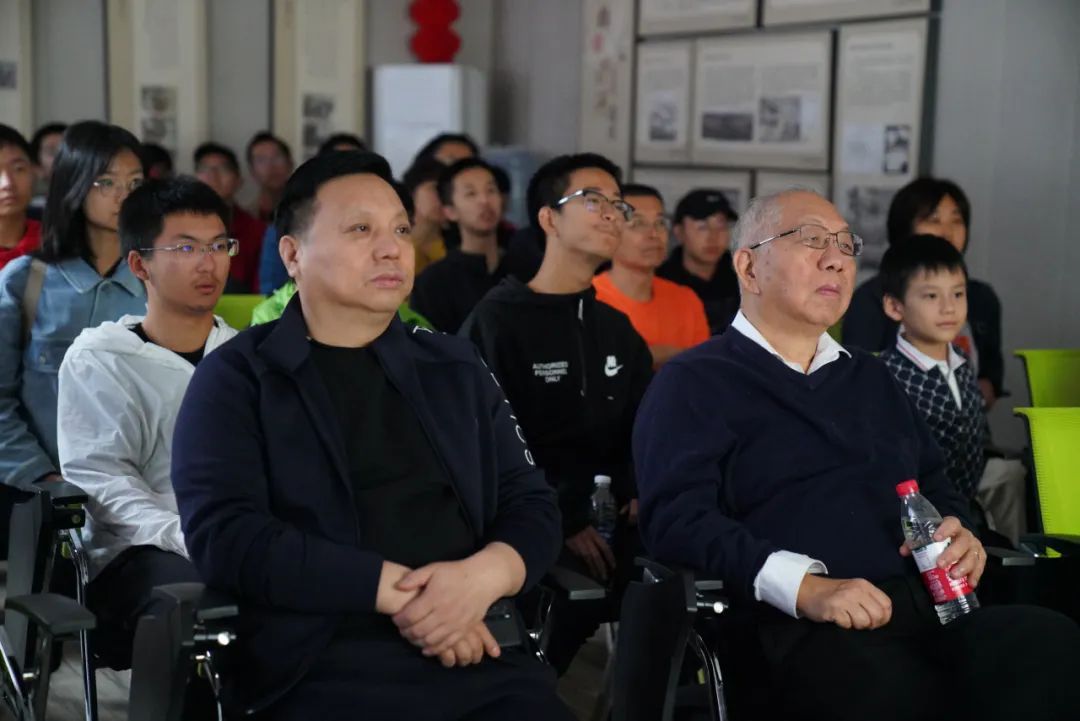
Visiting the Kaifeng State Bridge.
The fourth station is Dengfeng Shaolin Temple.
When it comes to the Chinese Central Plains culture, Shaolin Temple must be a familiar name to Chinese people. Through a large number of literary works and film and television works, we have a lot of understanding about Shaolin Temple. This time, we come here to see this thousand-year-old temple and its extensive and profound martial arts culture. It is often heard that "the world martial arts produce Shaolin", Shaolin has made great contributions to the inheritance of Chinese martial arts. After enjoying the Shaolin martial arts performance, we believe it even more. Wushu(Kong-fu) is a Chinese cultural treasure and one of the name cards of China's cultural exchanges with foreign countries.
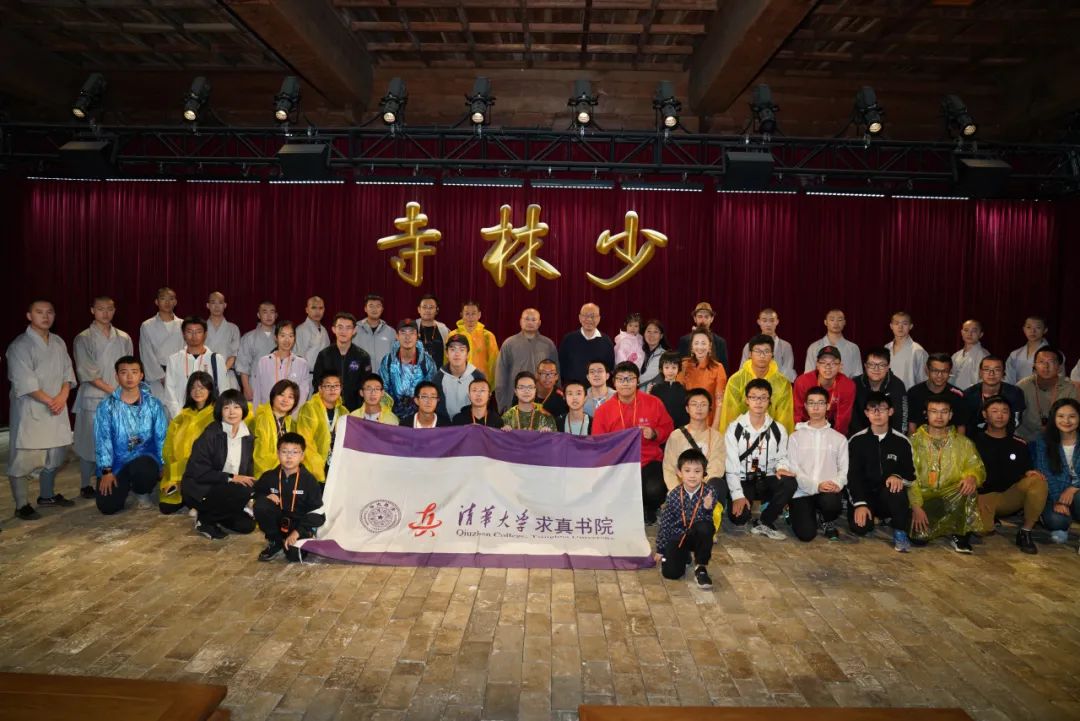
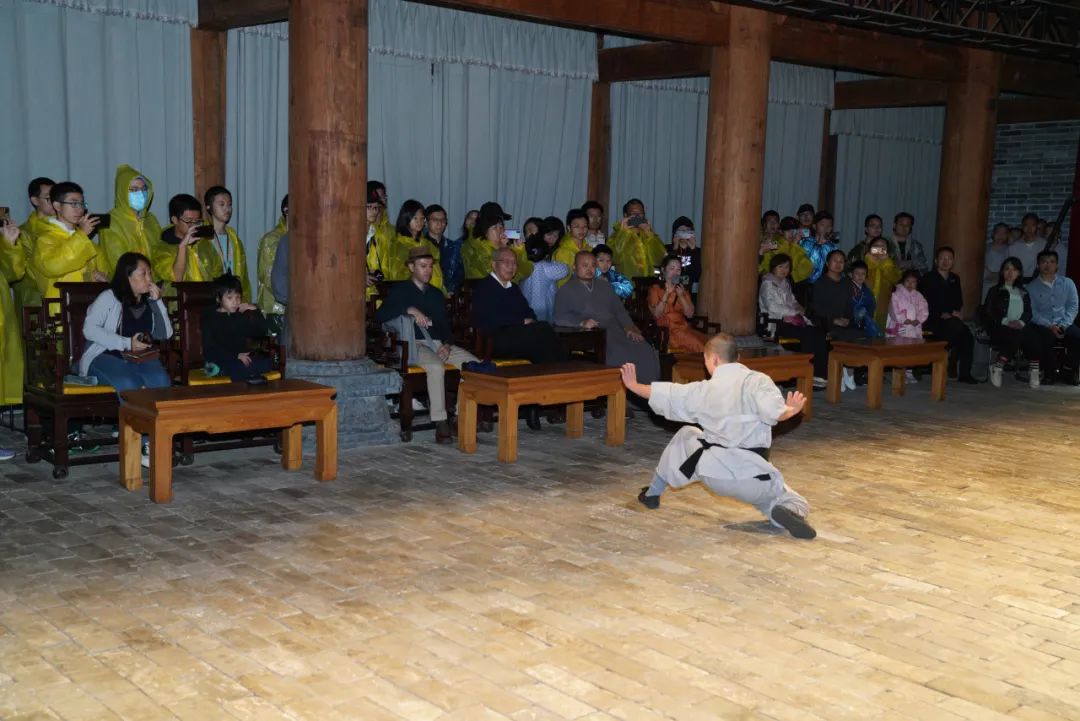
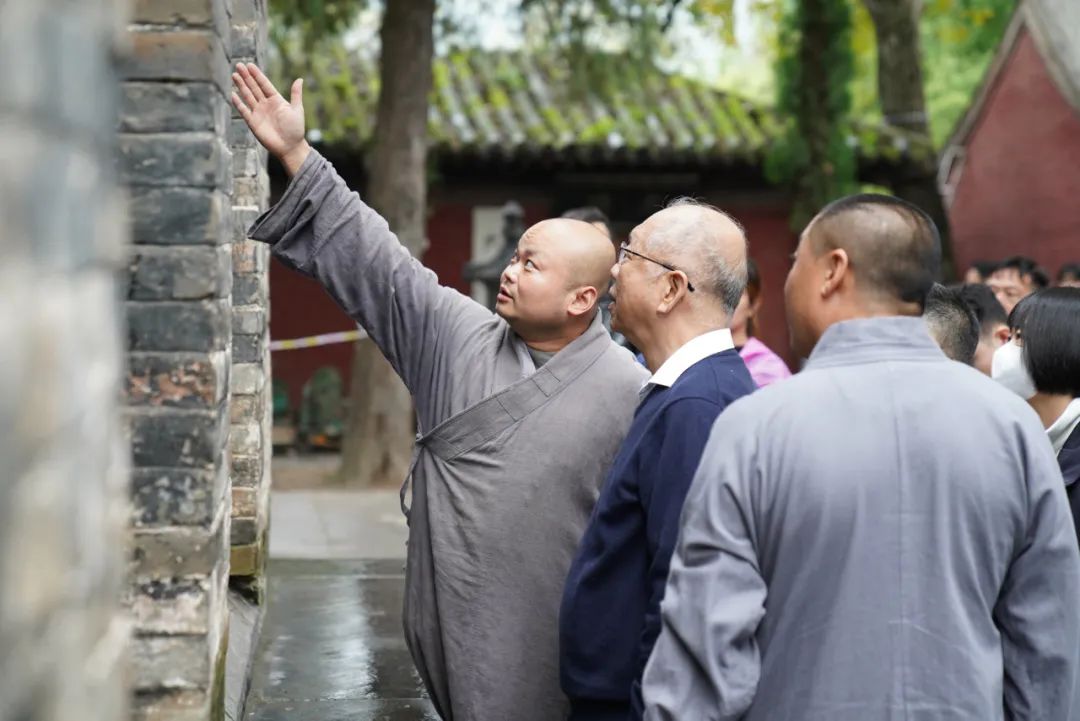
Visiting Shaolin Temple.
The fifth station, Luoyang.
Luoyang is also an ancient city of one thousand years old. In the 4,000 years year history, the earliest Chinese dynasties were mainly active between Yi and Luo in the Luoyang Basin. In history, 13 dynasties established their capitals here, and Luoyang became the city with the most dynasties in China. Since ancient times, Luoyang has been "in the world", the ruler built multiple concepts of "world", so often chose Luoyang, or as an important city, Luoyang in history, culture, politics and geography, civilization origin, national rise, ritual system, can find the answer here.
We visited the Longmen Grottoes, which is the first of Chinese grottoes art, is a bright pearl among the many historical sites in Luoyang, and is a witness to the development of Buddhist culture in China. Since the founding of the Northern Wei Dynasty, it has firmly believed in Buddhism. After Emperor Xiaowen moved the capital to Luoyang, he not only built many temples in Luoyang city but also began to dig the grotto Buddha statues in Longmen Mountain. Luoyang played a more prominent central position in the spread of Buddhism. In the Tang Dynasty, the grotto Buddha statues were dug continuously, and the most famous niche of Lushena was dug in that period. On the scene, we saw countless grottoes of Buddha statues, large and small, inlaid in the mountain wall, is very shocking, can not help but praise the ancient people's excellent artistic creativity and superb level of digging. However, since the construction of the grottoes, they have been destroyed and stolen for many times. We know that many cultural relics are still in foreign countries, and the damaged cultural relics are difficult to make up for, so we feel sorry. The protection of historical relics and cultural heritage is the basis for us to understand the source of Chinese civilization and the context of history, and it is our bounden duty.
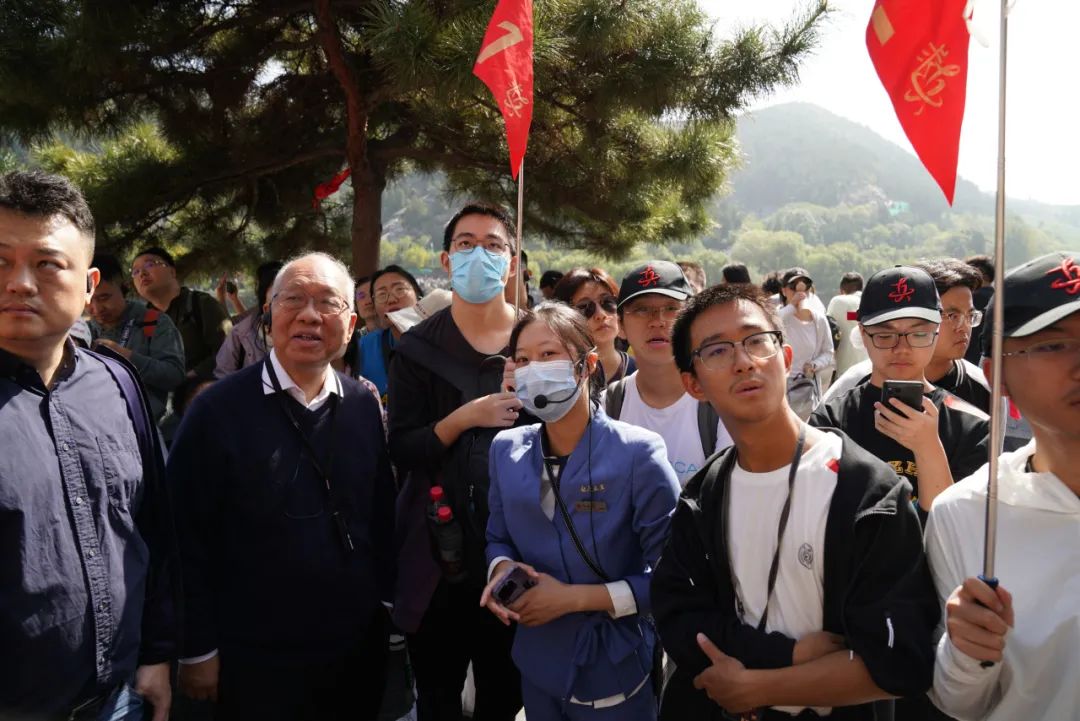
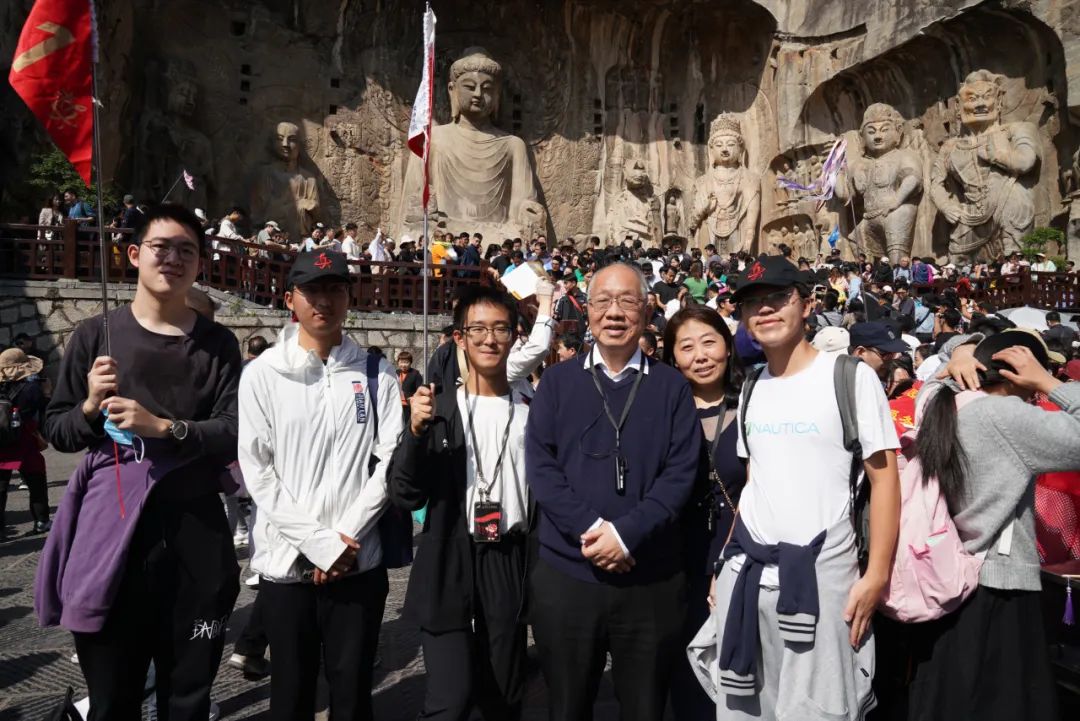
Visiting Longmen Grottoes.
Then we visited the Luoyang Museum and had a deeper understanding of Luoyang's long history, inclusive culture, the origin of the Silk Road, and the three-colored glazed pottery art of the Tang Dynasty. Visiting the Sixth Museum of the Son of Heaven, we learned about the strict hierarchy and ritual behavior implemented by the Zhou Dynasty at that time, which was originally recorded in the literature and was effectively verified.

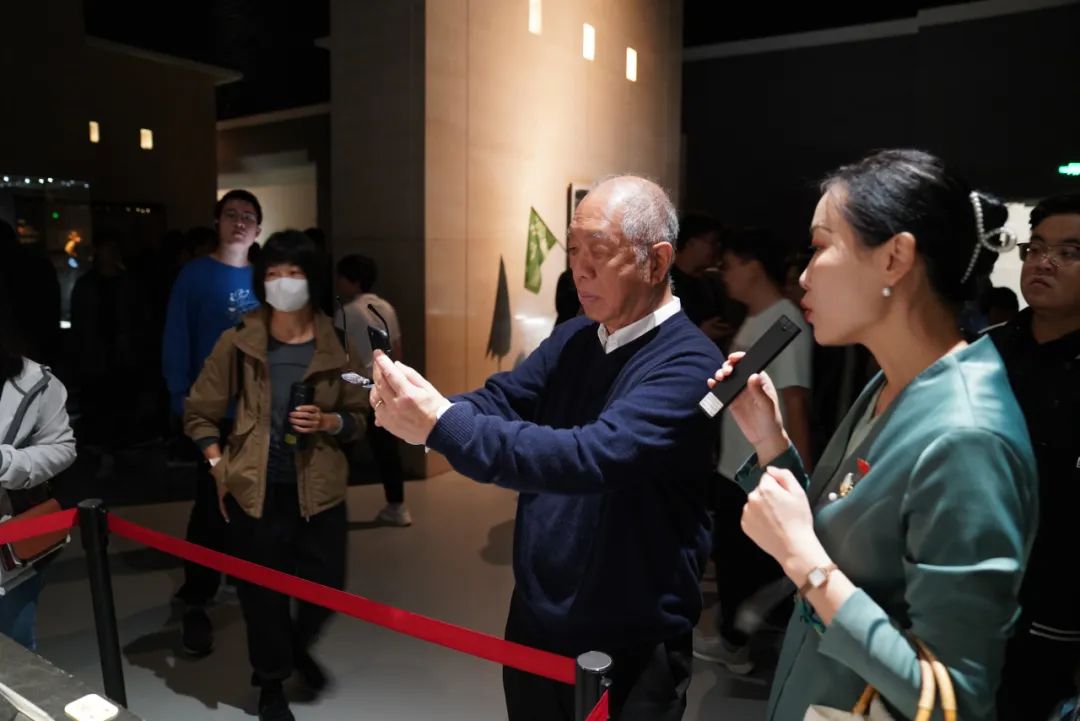
Visiting Luoyang Museum and Emperor(Tianzi)’s Six Horses Museum.
In the Sui and Tang Luoyang City National Site Park, we focused on visiting the Ming Hall and Heaven, which were copied on the ruins according to the description of the literature. It listed the history of the Sui and Tang Dynasties, focusing on the introduction of the Wu and Zhou dynasties. After Wu Zetian proclaimed herself emperor, she made Luoyang the capital and called it the capital of God. She built and built some magnificent buildings, such as Heaven, Ming Hall, and Shangyang Palace. Among them, we saw a piece of gold slips on display, which is said to be owned by Empress Wu Zetian. It is the only existing cultural relic of Wu Zetian, which is of great significance to historical research. There are sixty-three characters engraved on the gold slips, saying “Wu Zetian, the Emperor of the Great Zhou Dynasty, loves Taoism, and the long-live gods, so she comes to the Song Mountain, the central mountain, and delivered a golden envelope, begging for three officials and nine governments in the heaven, to mercy her crimes. On Jia-yin day, thus the seventh day of July of Geng-zi year, the little envoy of the Emperor, Hu Chao kotows here, bows again, and gives you carefully.” It can be seen that the mental journey of the Empress at that time.
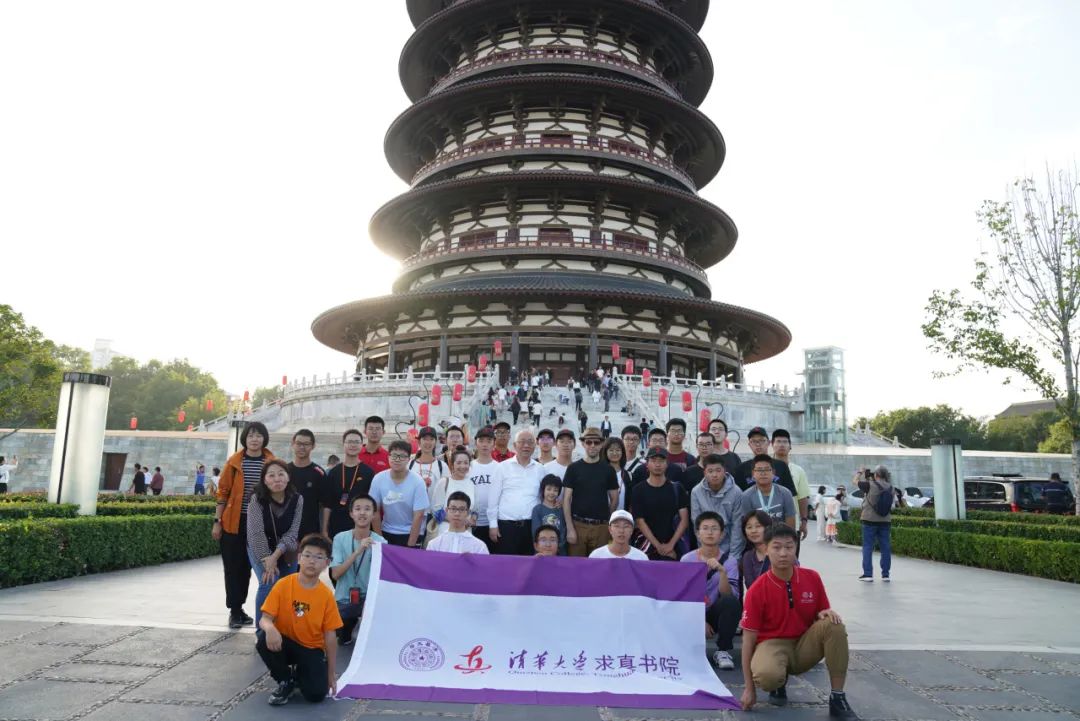
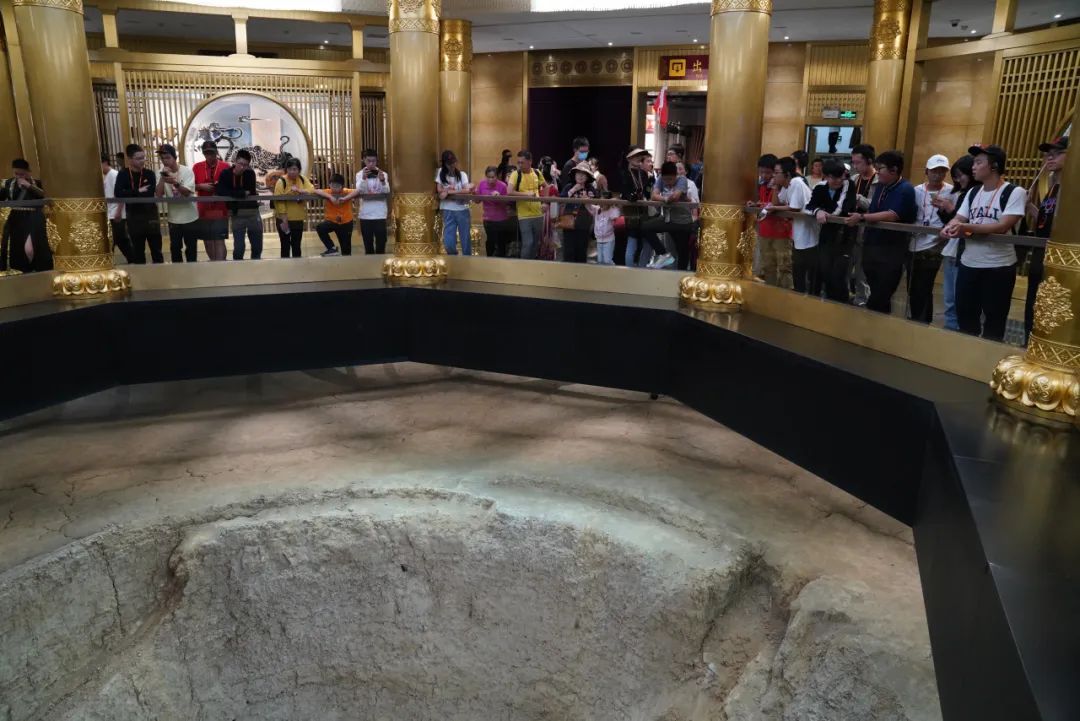
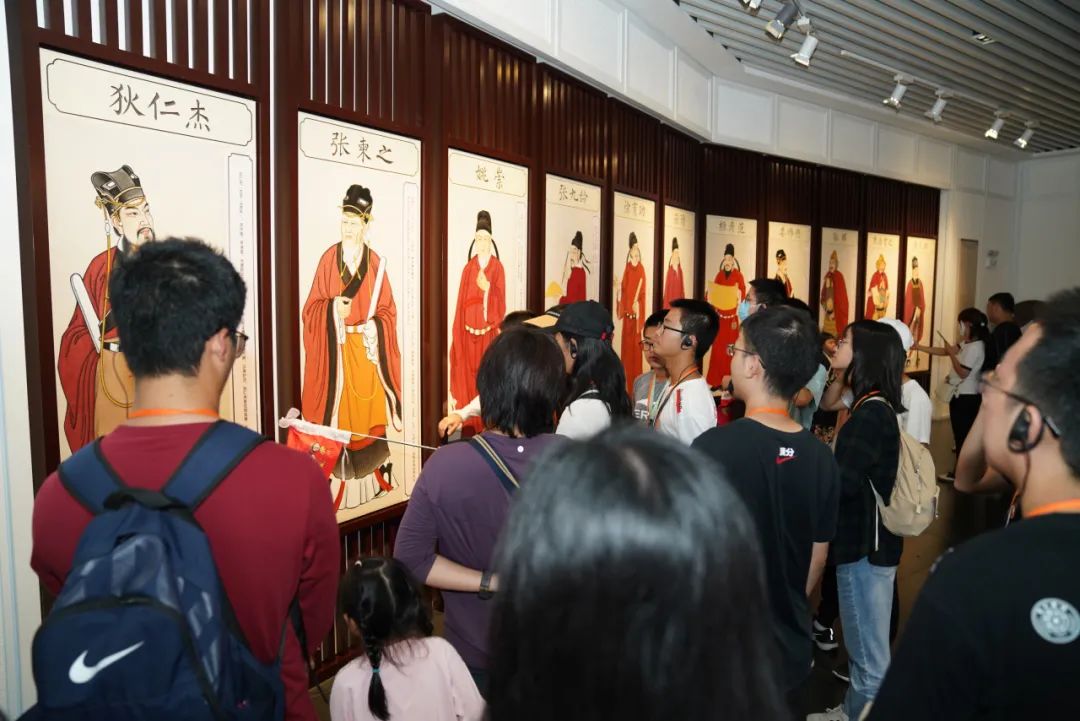
Visiting the Luoyang City National Heritage Park of the Sui and Tang Dynasties.
In 1959, not far from Luoyang, archaeologists discovered the Erlitou site, which opened the prelude to the exploration of Xia culture. According to historical records, the Xia Dynasty was the first dynasty in Chinese history, but there was for a long time no real archaeological site to prove the existence of the Xia Dynasty, until the discovery of the Xia capital site in Erlitou, which made the Xia Dynasty from the legendary era to the historical reality."Nine areas in the world can recognize the traces of Da-Yu, and the four seas should be the under the administration of Yao-Emperor together". Da-Yu demarcated the nine areas of China, pacified the flood, and condensed people's hearts so that a wide area of the royal state began to form.
In the Erlitou Xia-Capital Site Museum, we visited the bronze, pottery, jade, turquoise, bone, and other cultural relics unearthed here, and listened to the introduction of the history of the Xia Dynasty. Looking at the turquoise dragon shape, exquisite shape, bright color, seven-hole jade knife grain, precious texture, inlaid turquoise animal face pattern bronze medal with exquisite processing, silk buckle, and integrity after thousands of years, we deeply sigh the craftsman spirit and superb skills of the ancients thousands of years ago. The Chinese civilization has a long history, and many others are waiting for us to explore and explore.
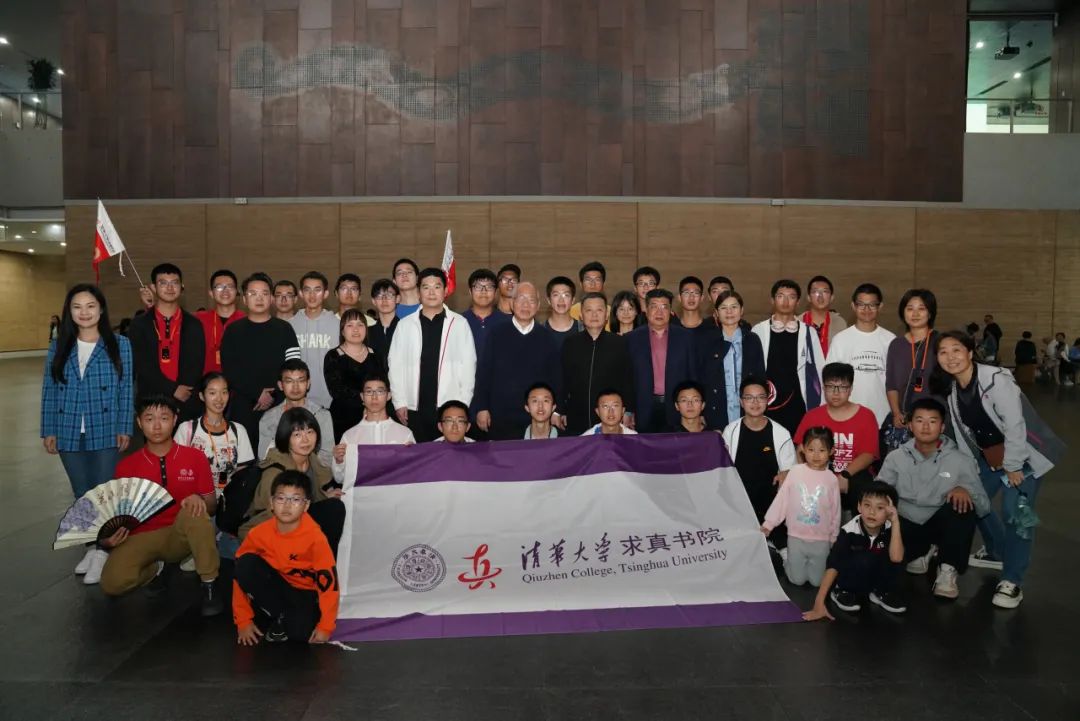
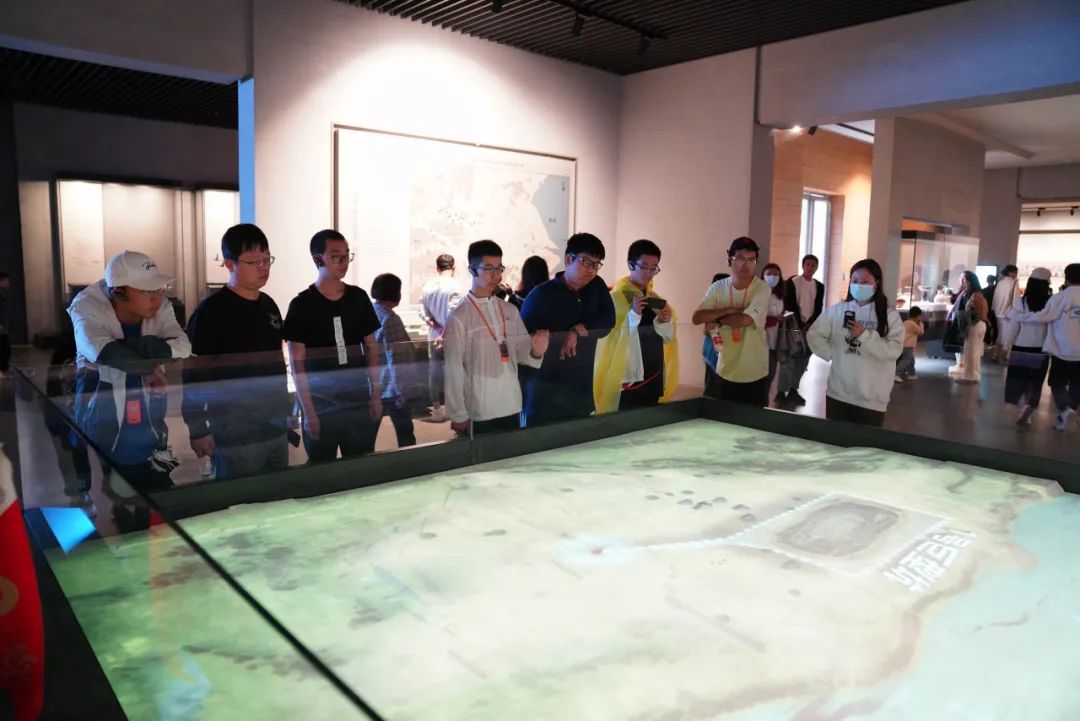
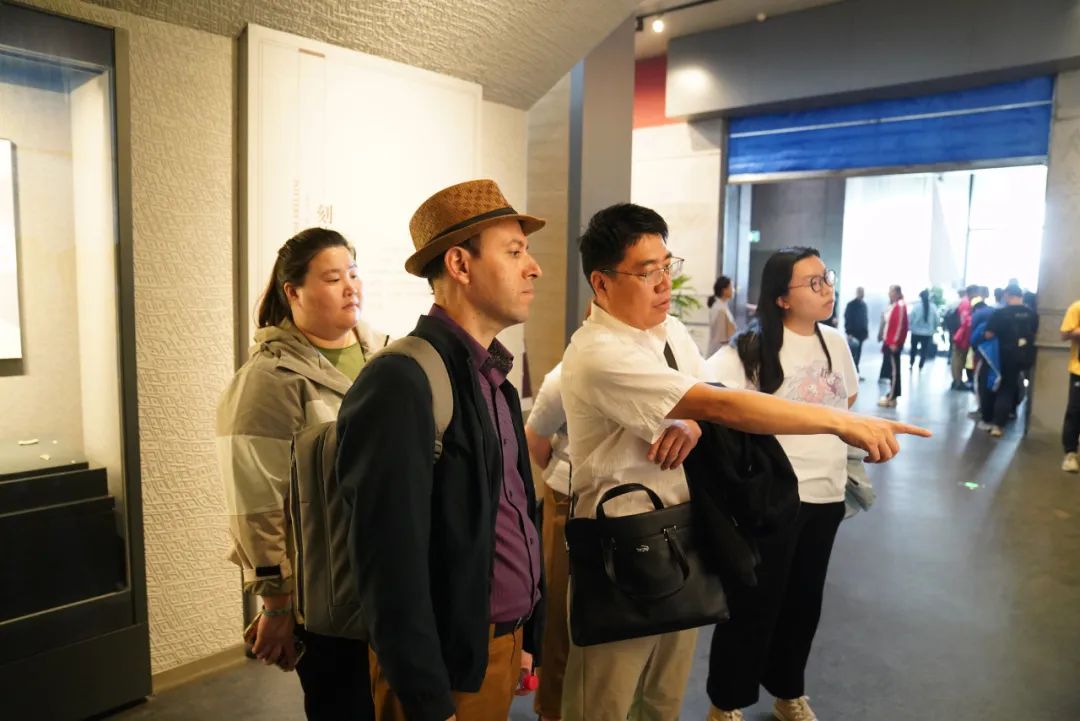
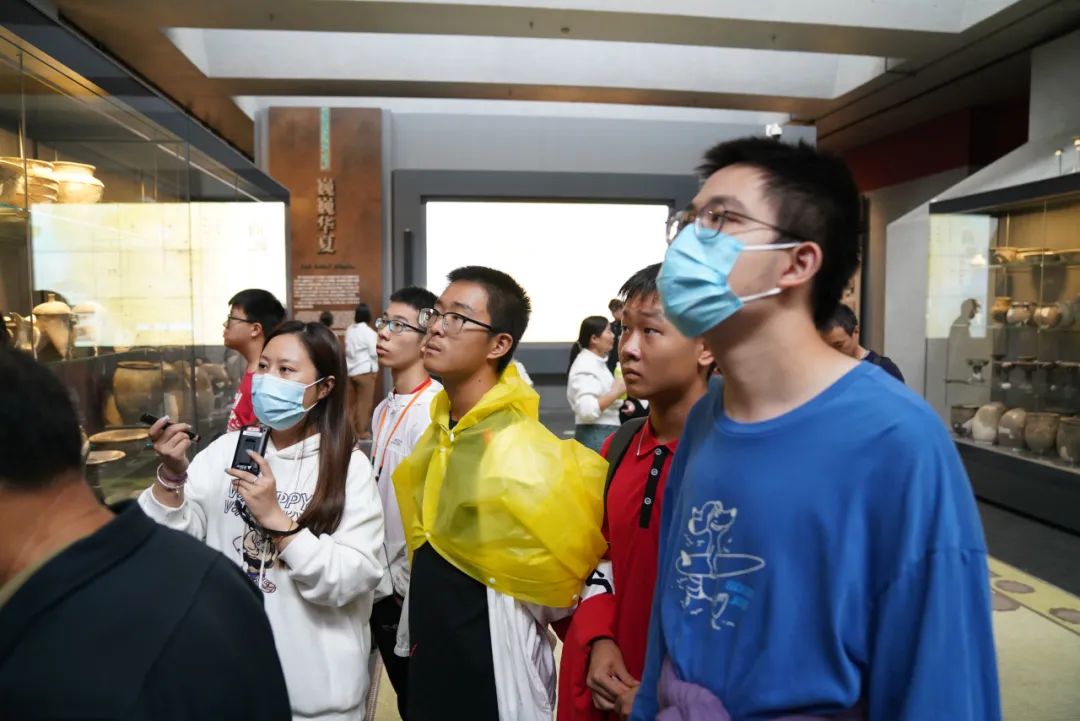
Visiting Erlitou Xia-Capital Site Museum.
The sixth station, Zhengzhou
Zhengzhou, the capital of Henan Province, was known as the ancient commercial capital. More than 3,600 years ago, the Shang Dynasty built its capital here, called the "Bozhou Capital". According to the division of “Shang-Shu: Yu Gong”, Zhengzhou belonged to the "domain of Yuzhou" in ancient times. In Zhengzhou, we visited the Henan Museum and Commercial Capital Site Museum, an in-depth study of the history of the Central Plains. When we came to the famous Henan Museum, we marveled at the number of cultural relics in our collection, some of which are known as the national weight. Before the visit, we consulted relevant materials in advance and did our homework on some important cultural relics such as the lotus crane, square pot, lucky owl, moire, jade handle iron sword, Jia Hu bone flute, Du Ling Ding Pot, and the murals of four gods. On the same day, we went to the museum and visited the theme exhibition of "Great China Chooses Center to Build the Capital". Under the introduction of the narrator, we had a deeper understanding of the Yellow River basin culture- -the root of Chinese culture.


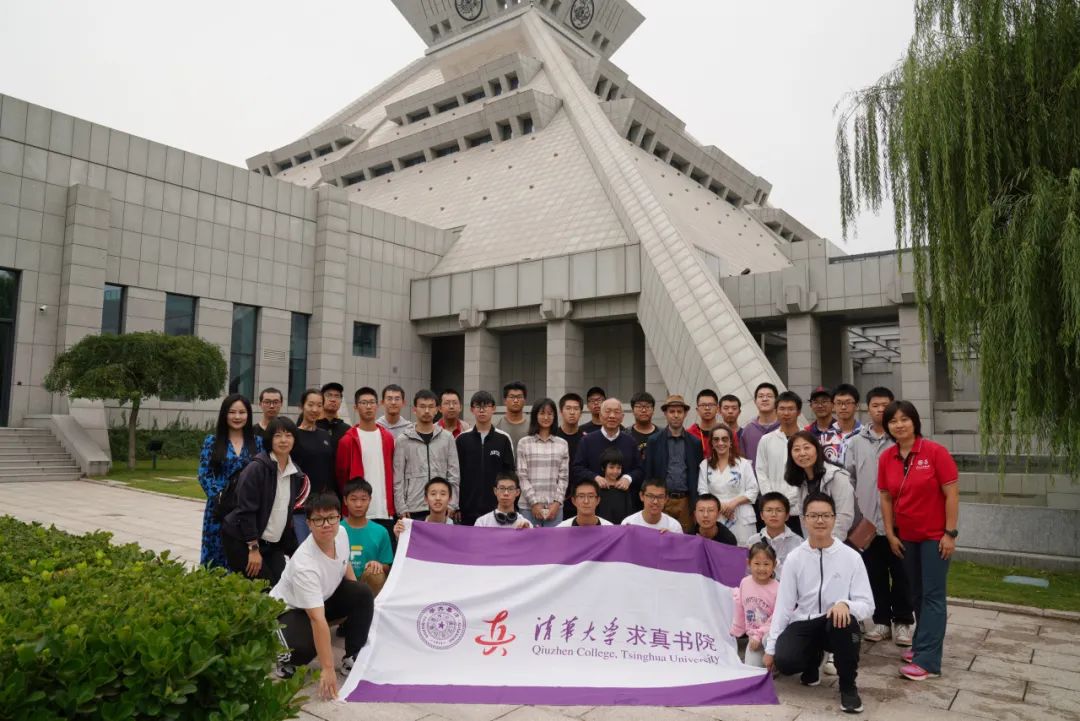
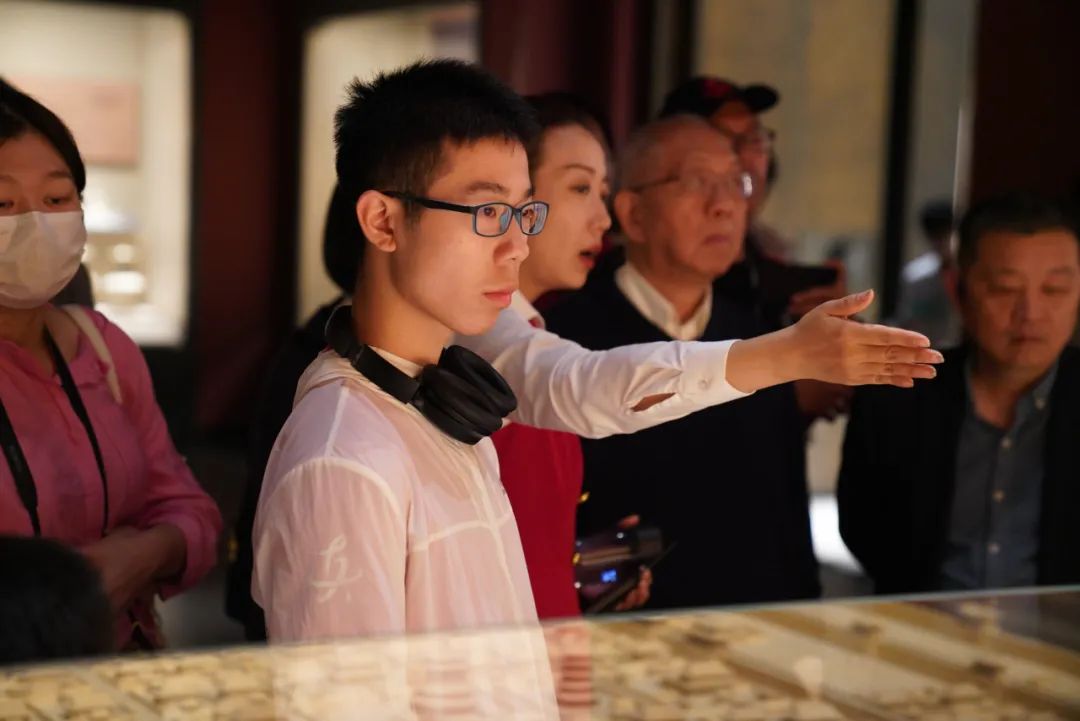
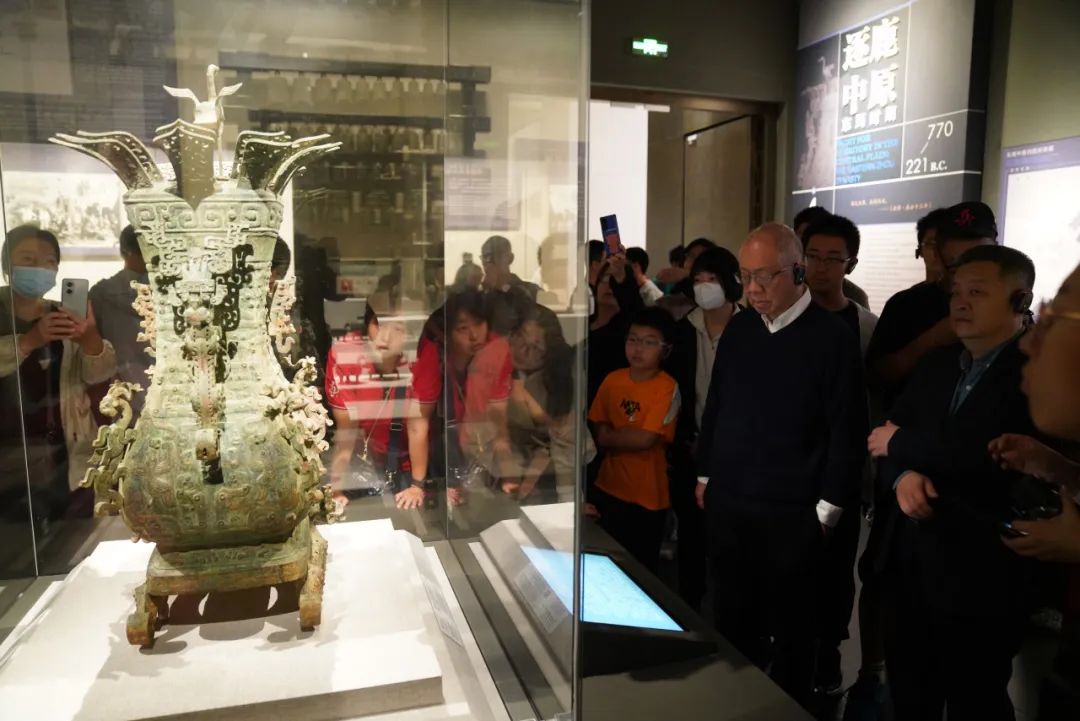
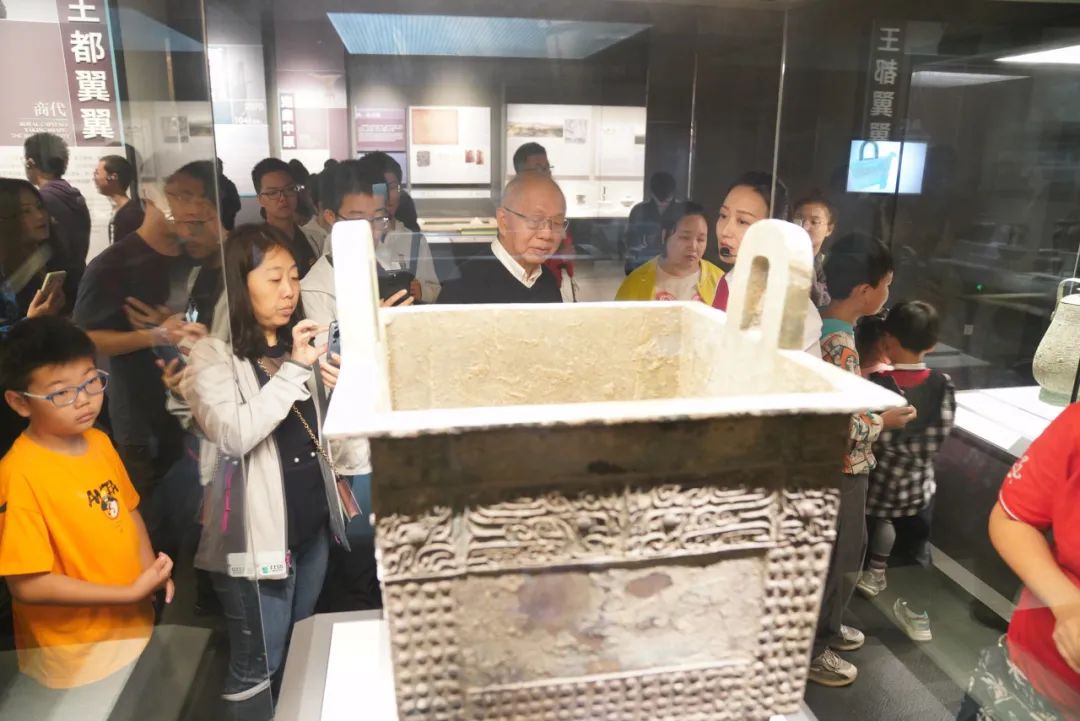
Visiting the Henan Museum.
With the history and civilization of the Shang capital as the core, the Zhengzhou Shang-Capital Site Museum slowly reveals the mystery of this capital city that has been silent for more than 3,600 years and decodes the millennium roots of the early Chinese civilization. We visited seven exhibition units, such as “The Cradle of Civilization, The Blackbird Story, The Lofty Shang Capital, Dayi Shang Capital, Square Poles, Endless Civilization, watching and Protection”, and listened to the introduction of bronze, jade, bone, pottery, and other exhibition cultural relics, we can see that the bronze technology of the Shang Dynasty was very developed. Looking at the detailed introduction of the history of the Shang Dynasty in the museum, as if through the past. It said in ancient that “the Heaven ordered the blackbird, so it landed on the earth to give birth to Shang people”.In 1600 BC, Cheng Tang led the Shang army and the Xia army in the decisive battle, known as the Battle of Mingtiao in history. In this battle, the Xia army was defeated, and Cheng Tang was established and established its capital in Bozhou, namely today's Zhengzhou. The Yin and Shang dynasties lasted more than 500 years, and they were finally destroyed by Zhou. Dynasty iteration, chaos, and prosperity, the wheel of history rolling forward, only with later generations, from the perception.
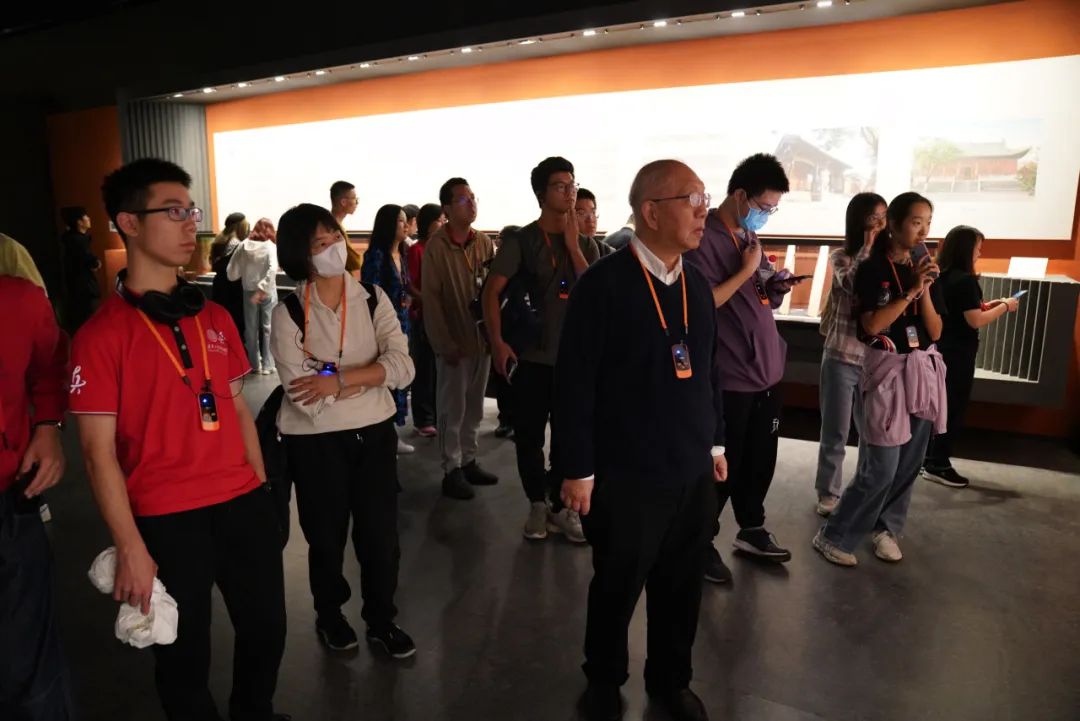
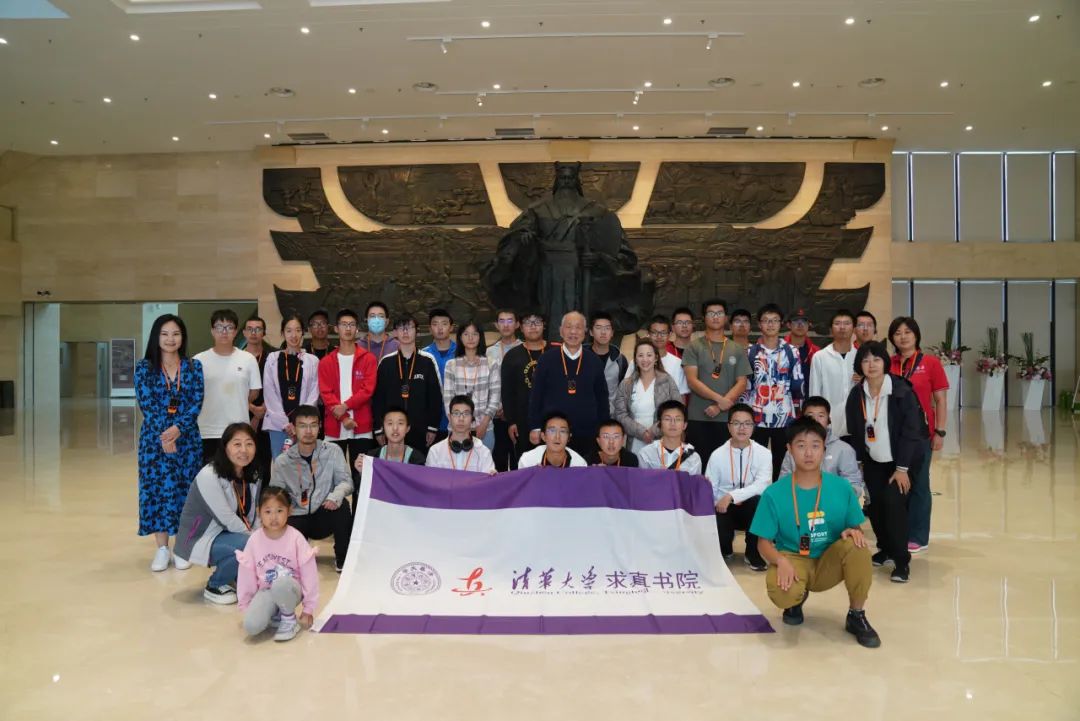
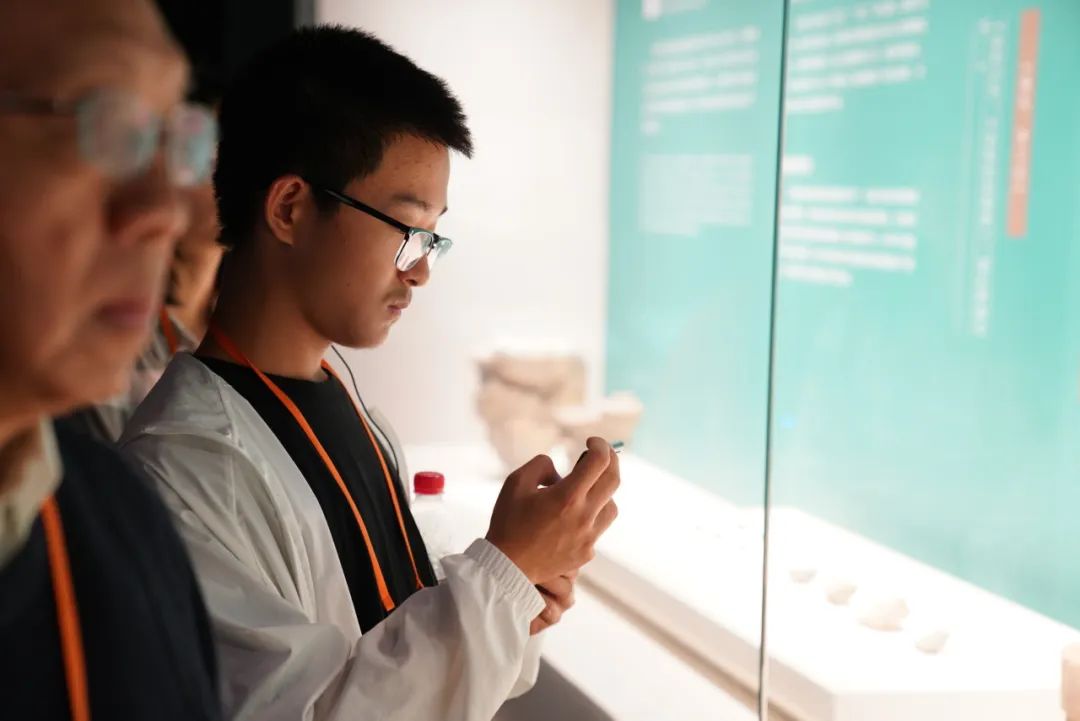
Visiting the Shang Capital Site Museum.
During the study tour, Dean Shing-Tung Yau and the students of Qiuzhen College held a Mid-Autumn Festival symposium. Teachers and students gathered together to talk about the development of mathematics. During their stay in Luoyang and Zhengzhou, the teachers and students of Qiuzhen College were warmly received by the Henan Alumni Association of Tsinghua University. Through the exchange, we learned that the seniors who graduated from Tsinghua University have been struggling in all parts of the motherland for many years and devoted their youth and pride to the great cause of building the motherland, and the students were deeply touched and will remember the message of "promoting Chinese mathematics".
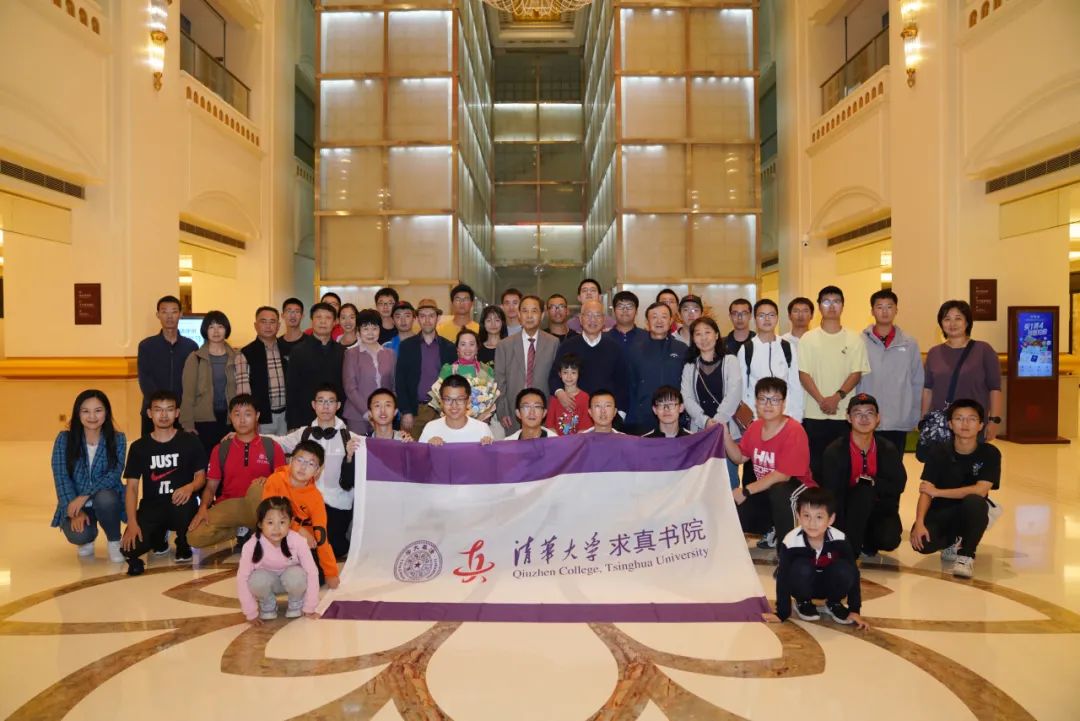
Exchange with the Henan Alumni Association of Tsinghua University.
From Zibo to Zhengzhou, the study tour gave you a more personal understanding of the origin and development of Chinese history and civilization and gained a lot. We will continue to explore and learn from Chinese civilization and be passed on from generation to generation.
Text | Xie Lufang
Typography | Gong Wei
Audit | Wang Xiaofang, Guo Youran
Translation | Gao Xudong